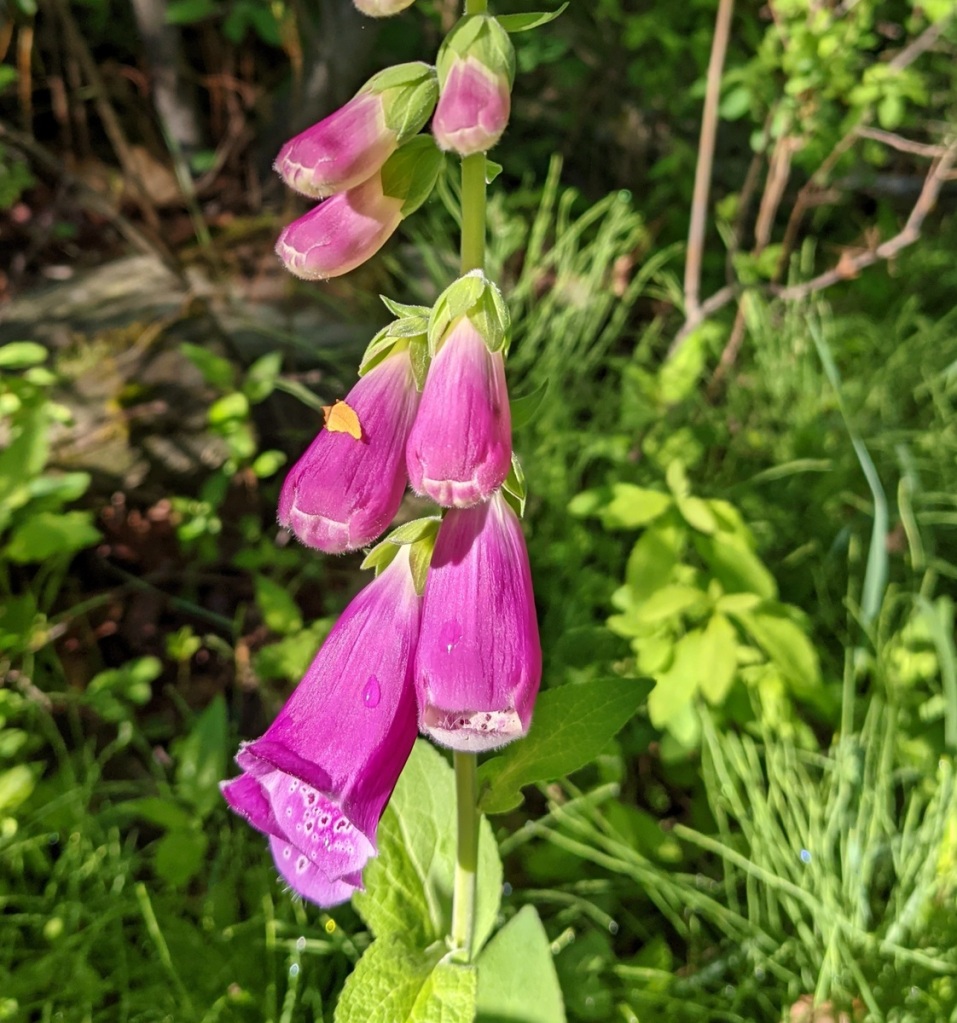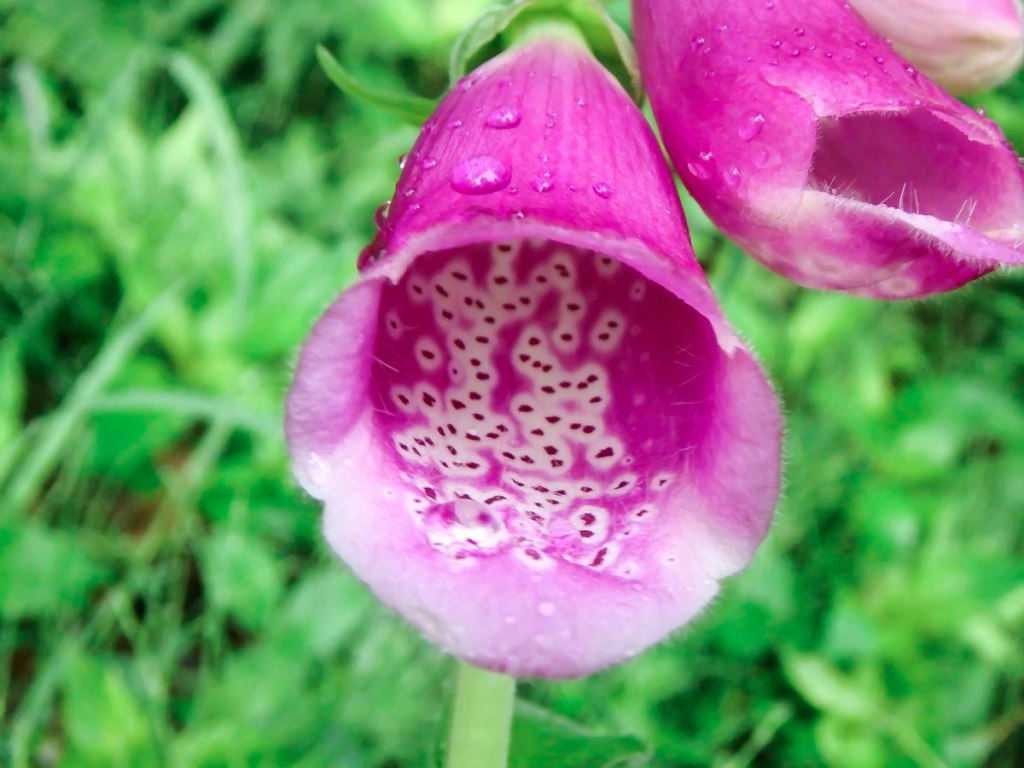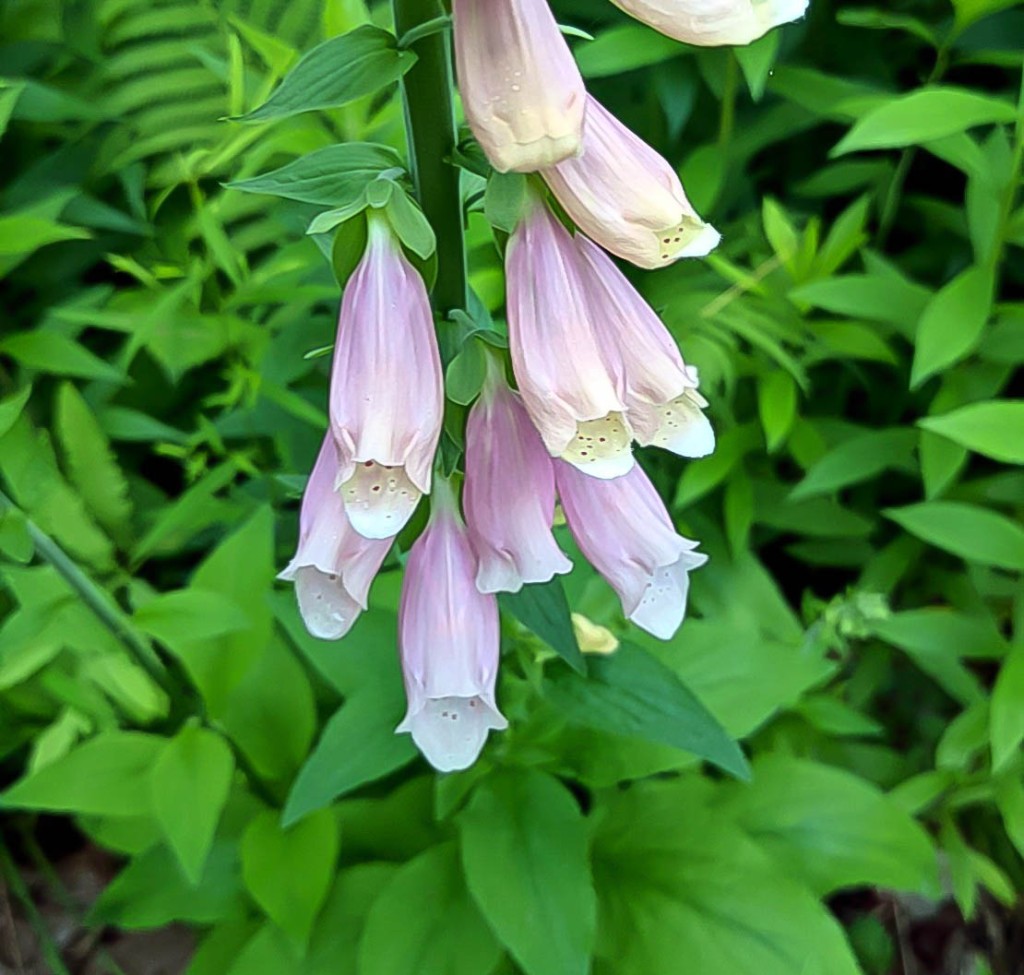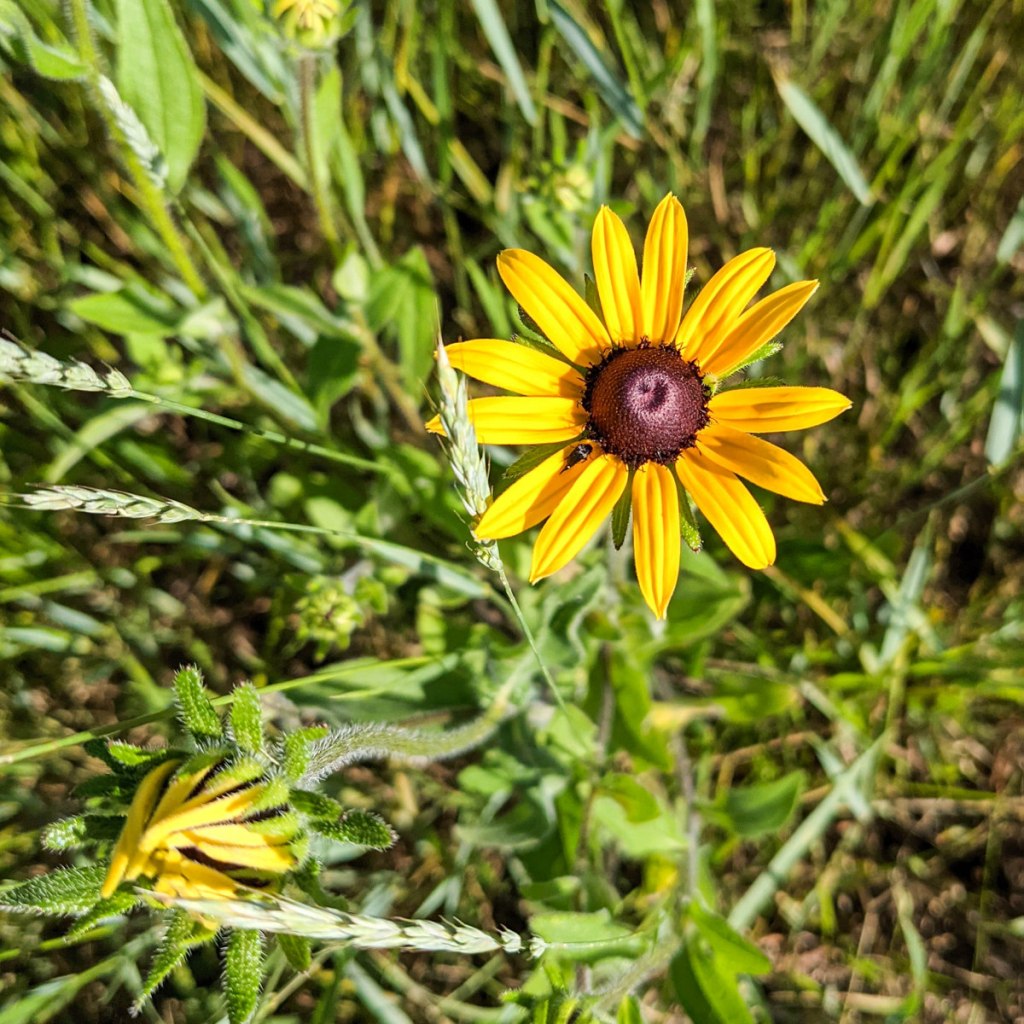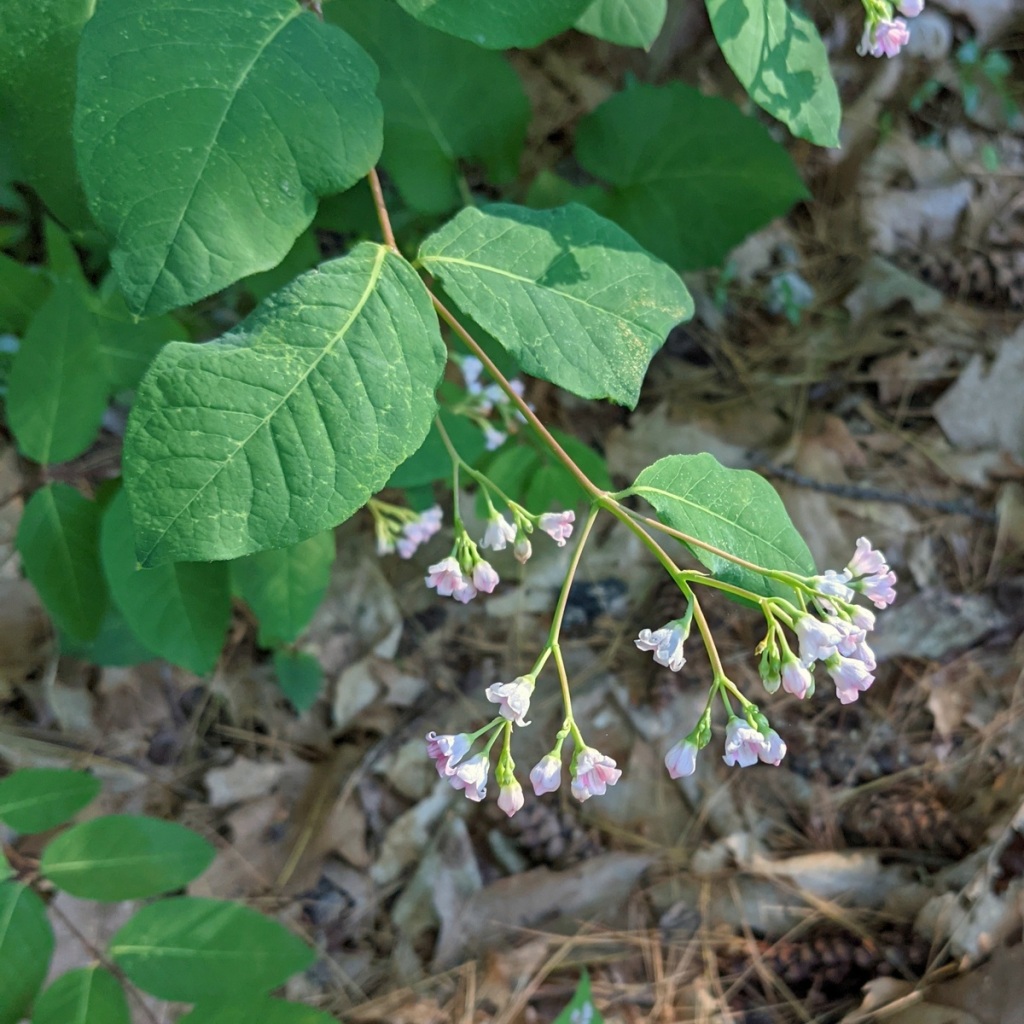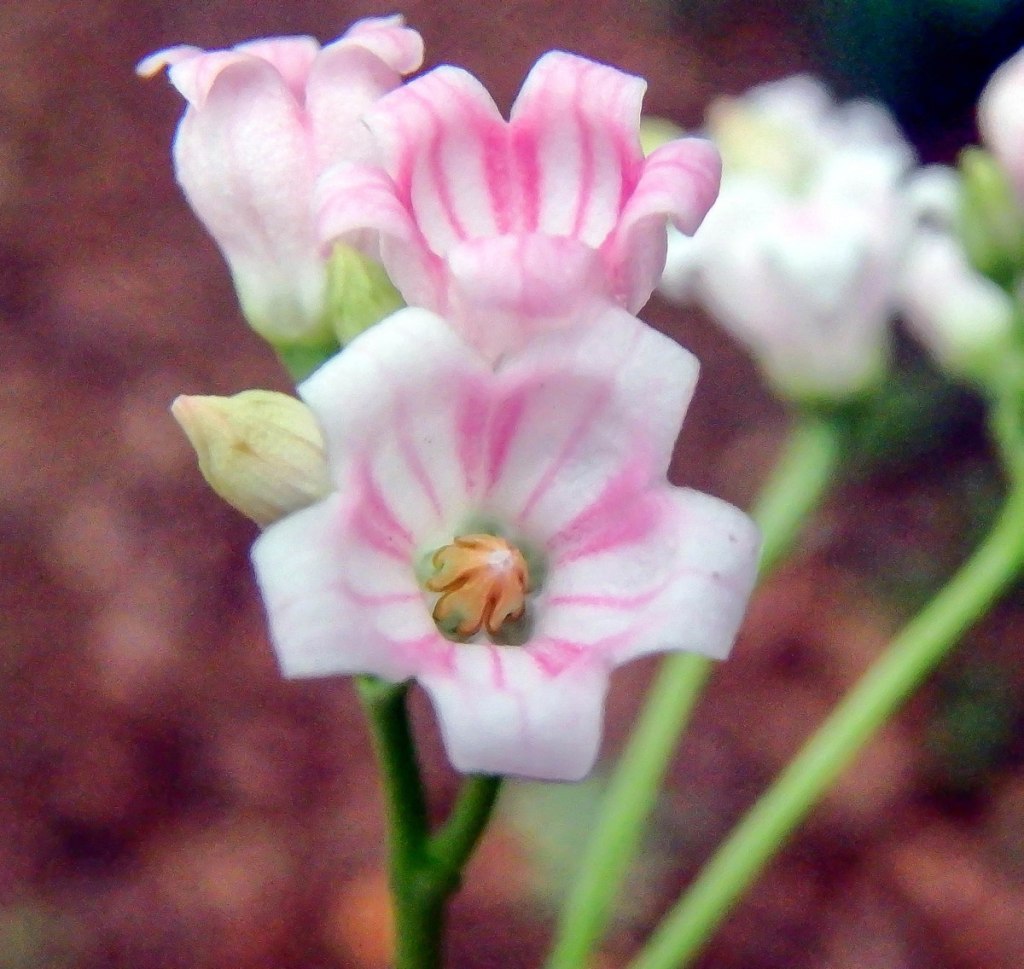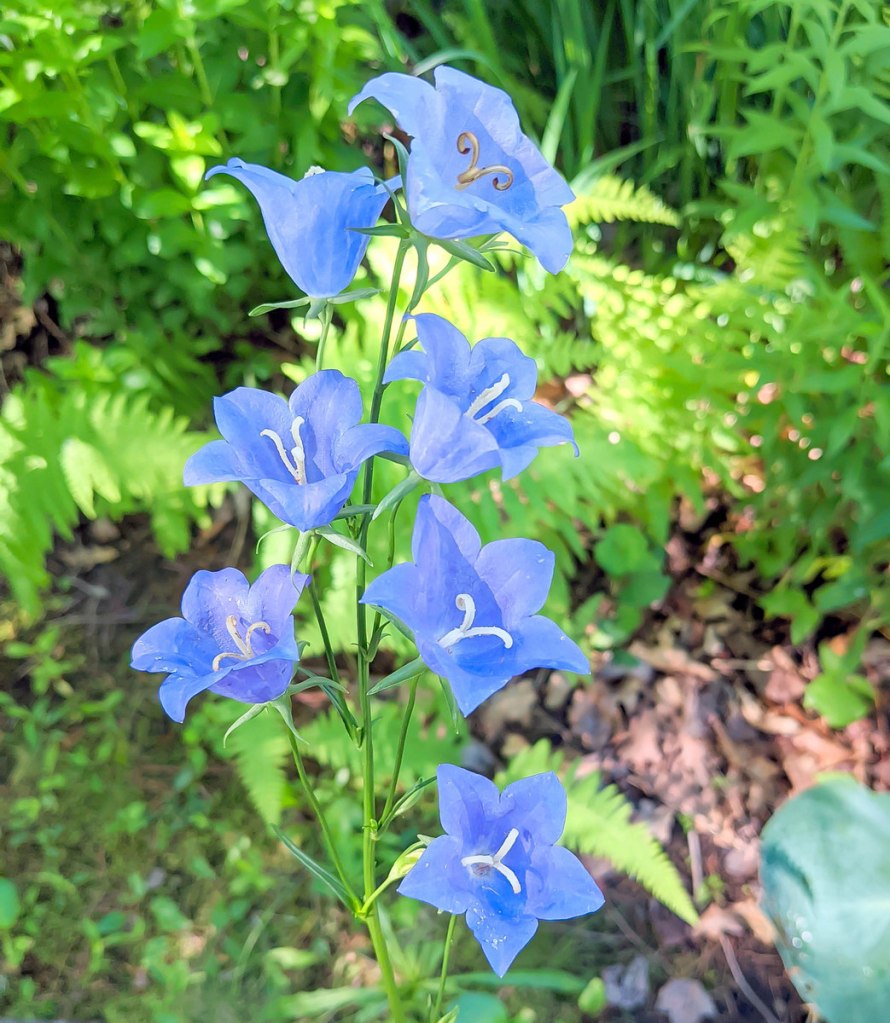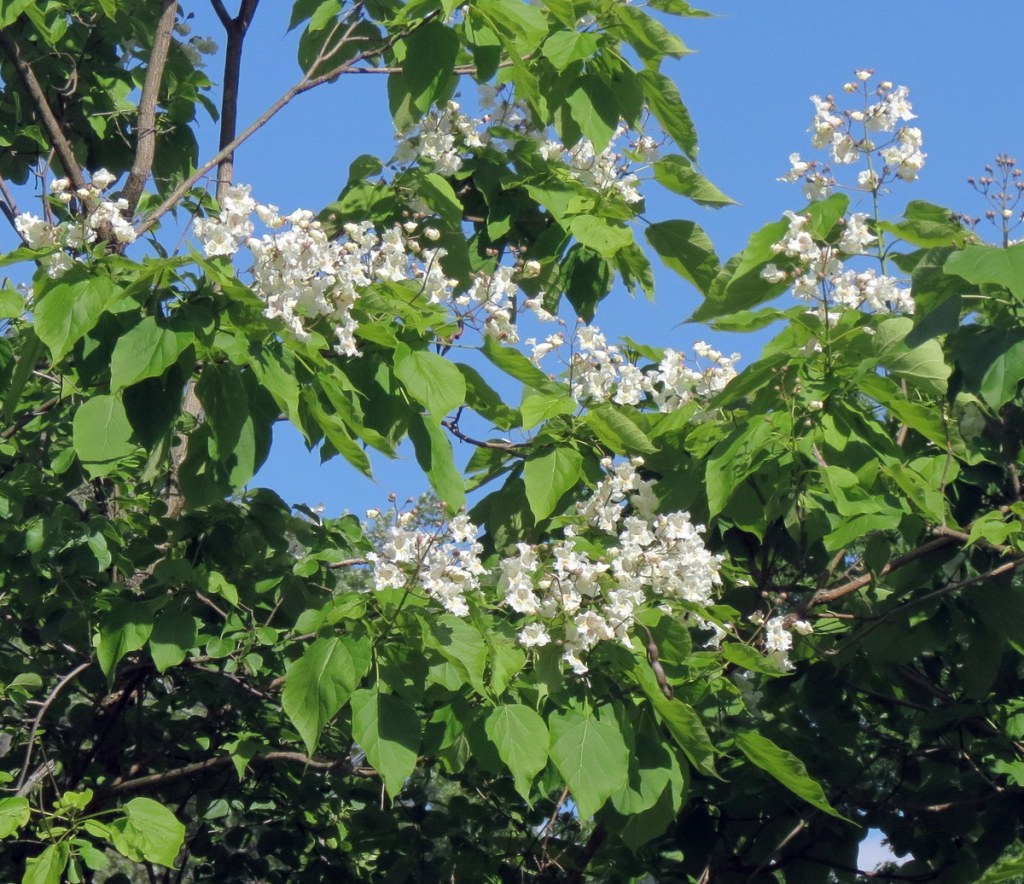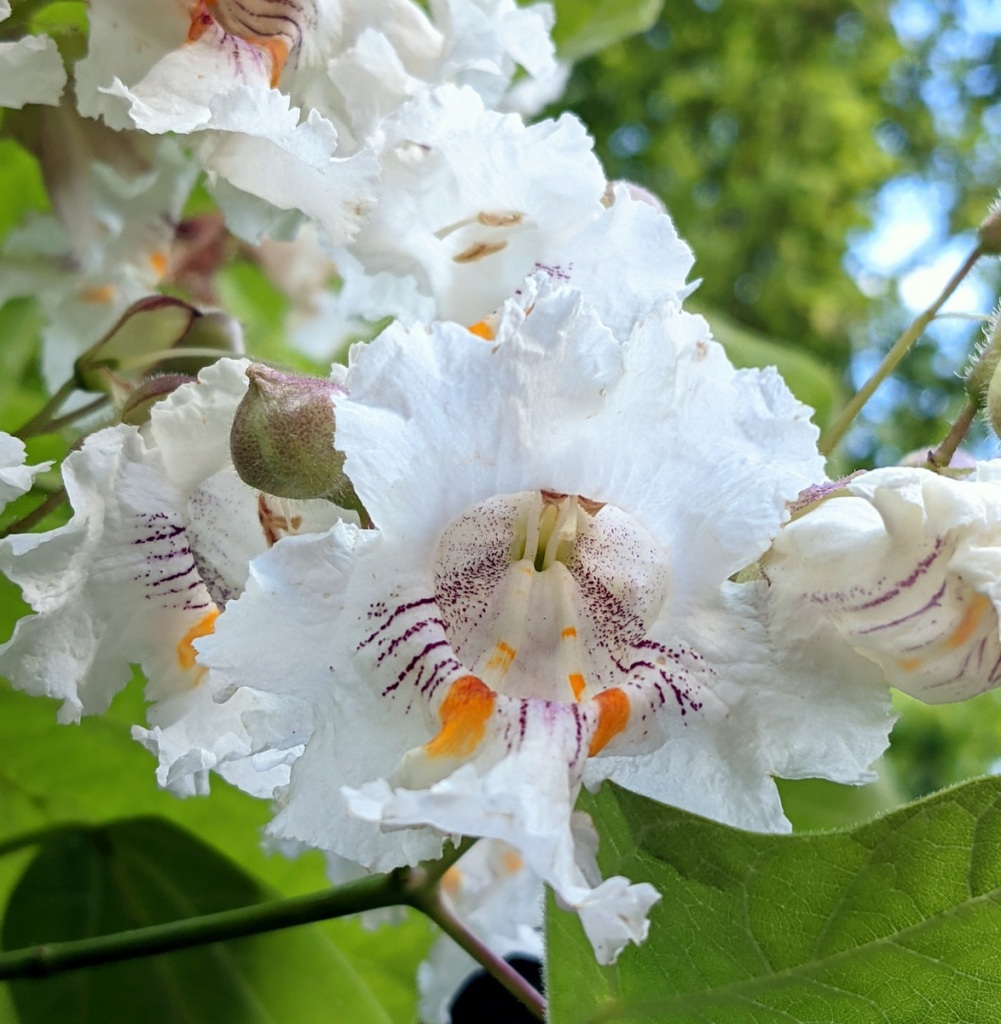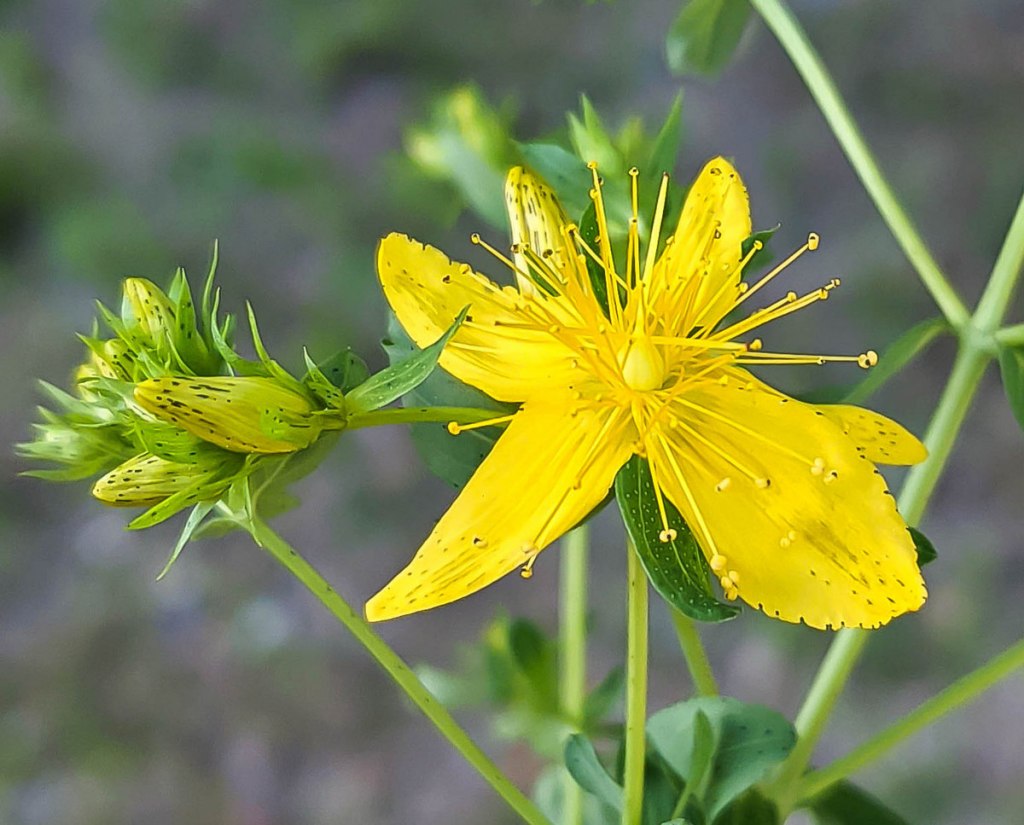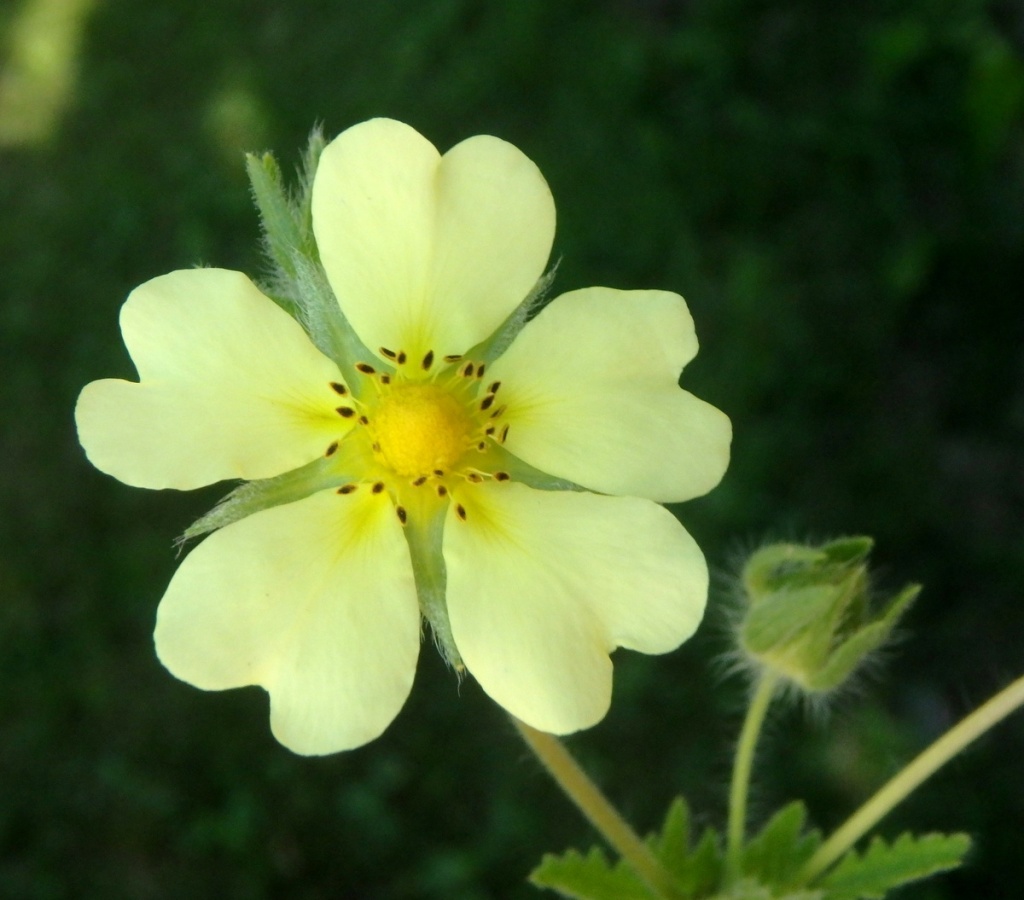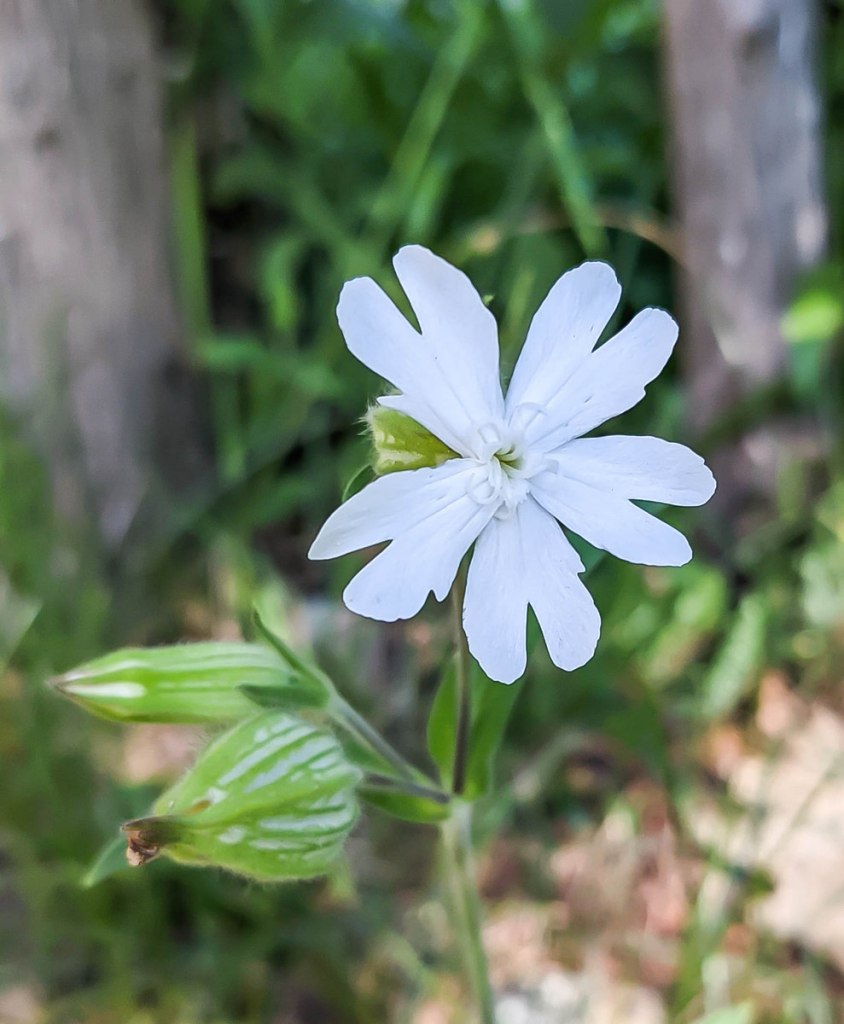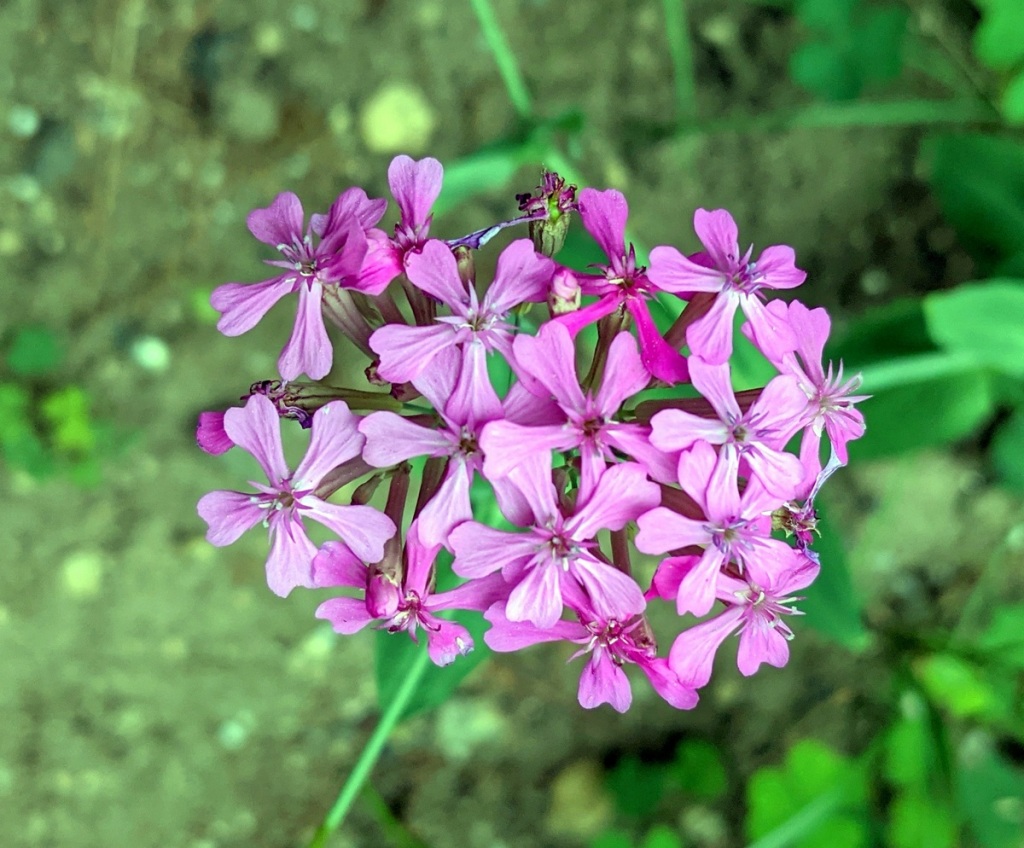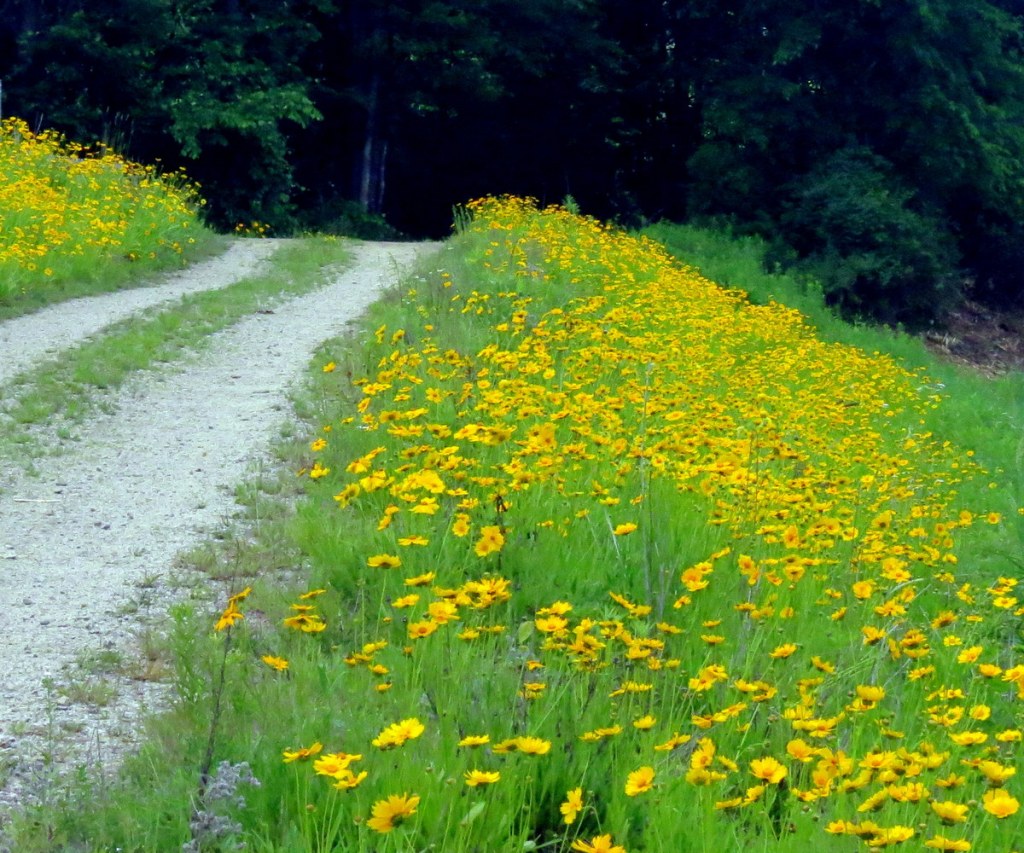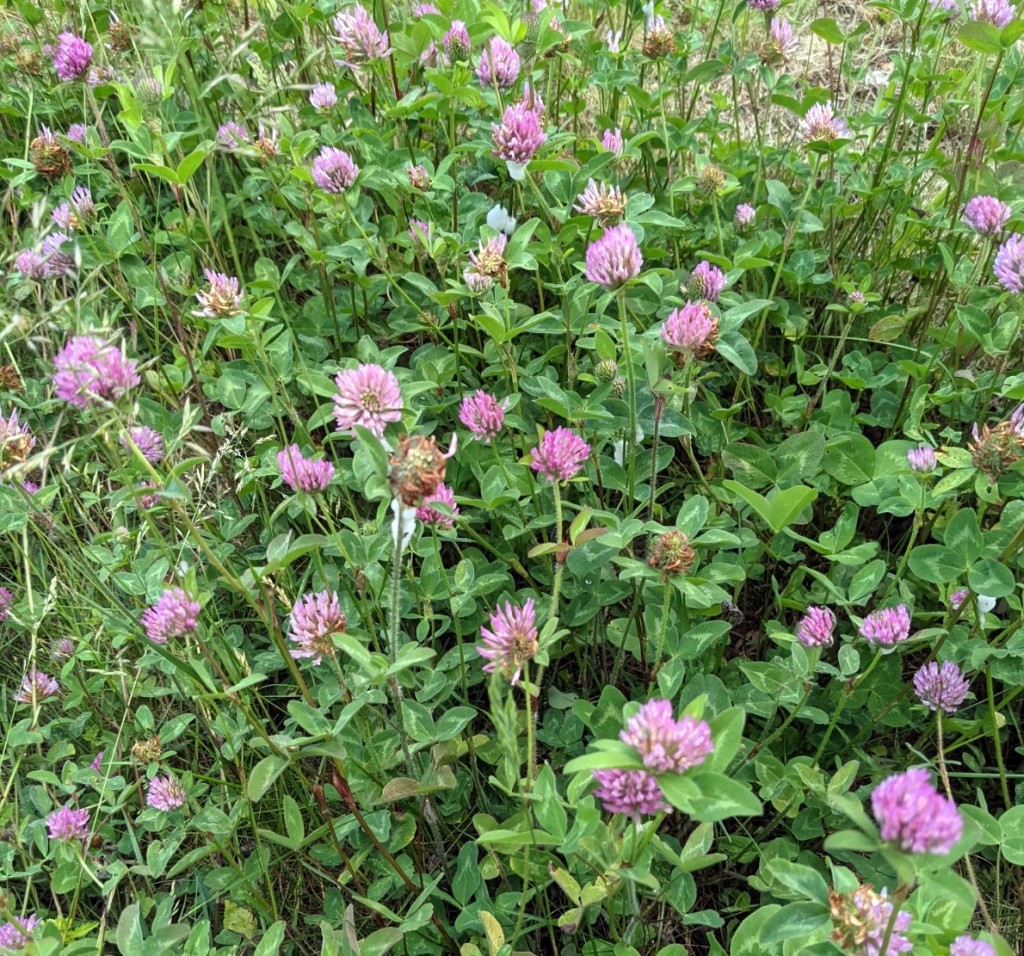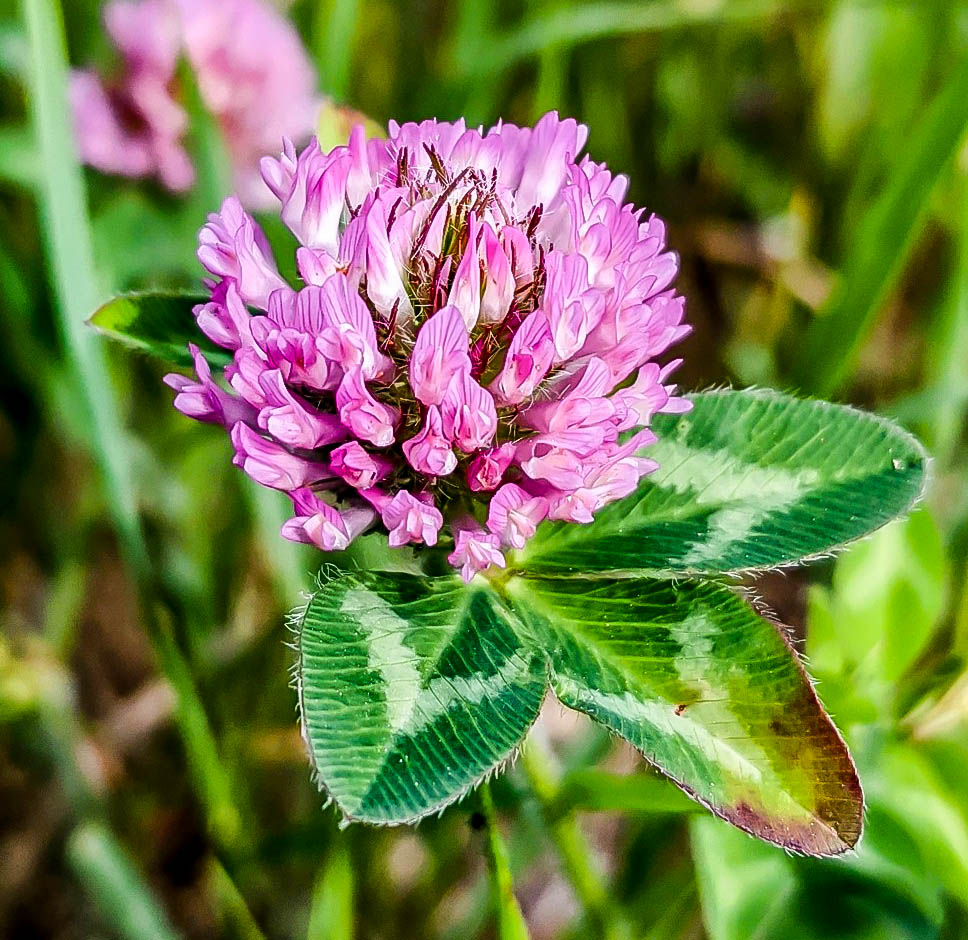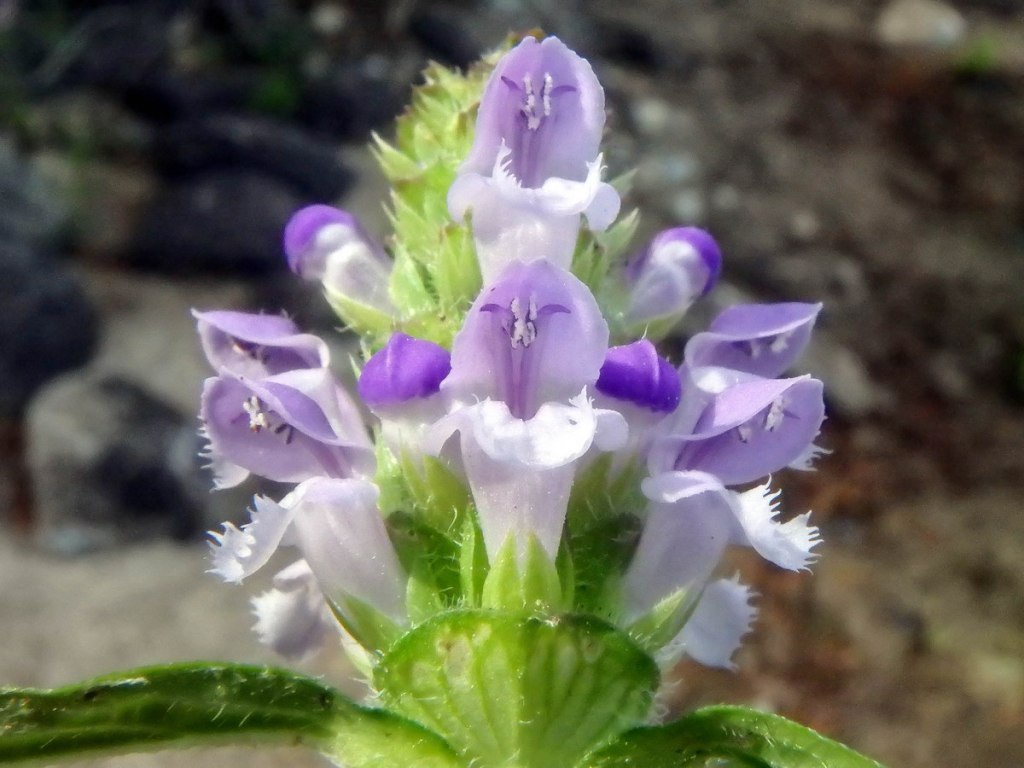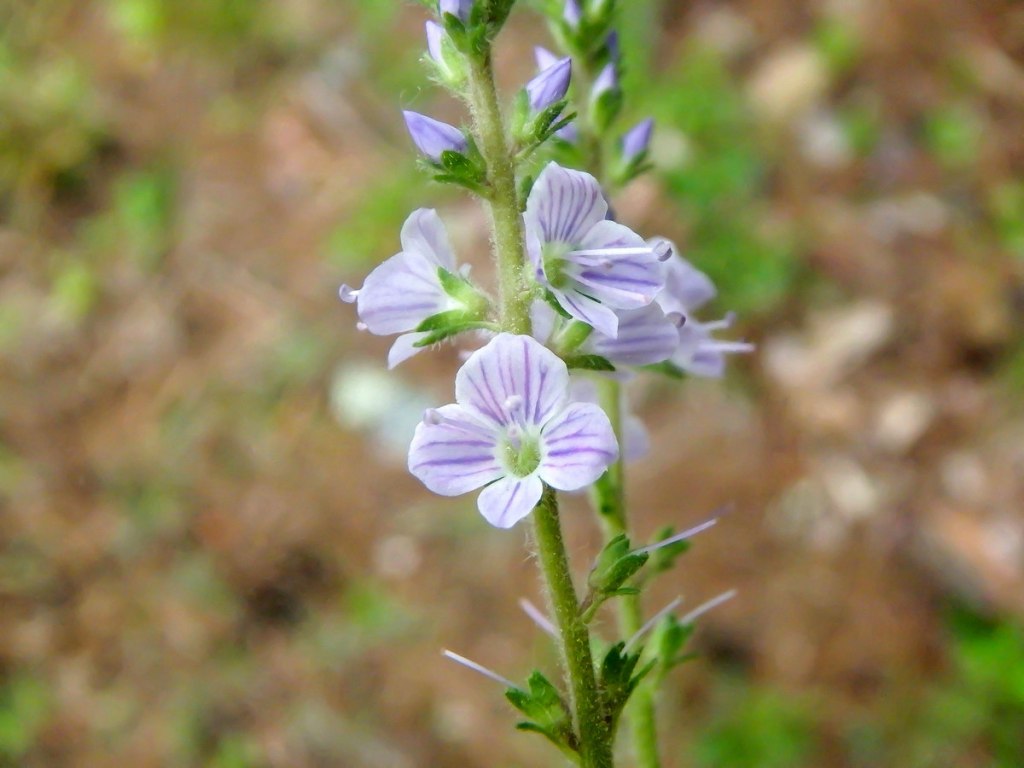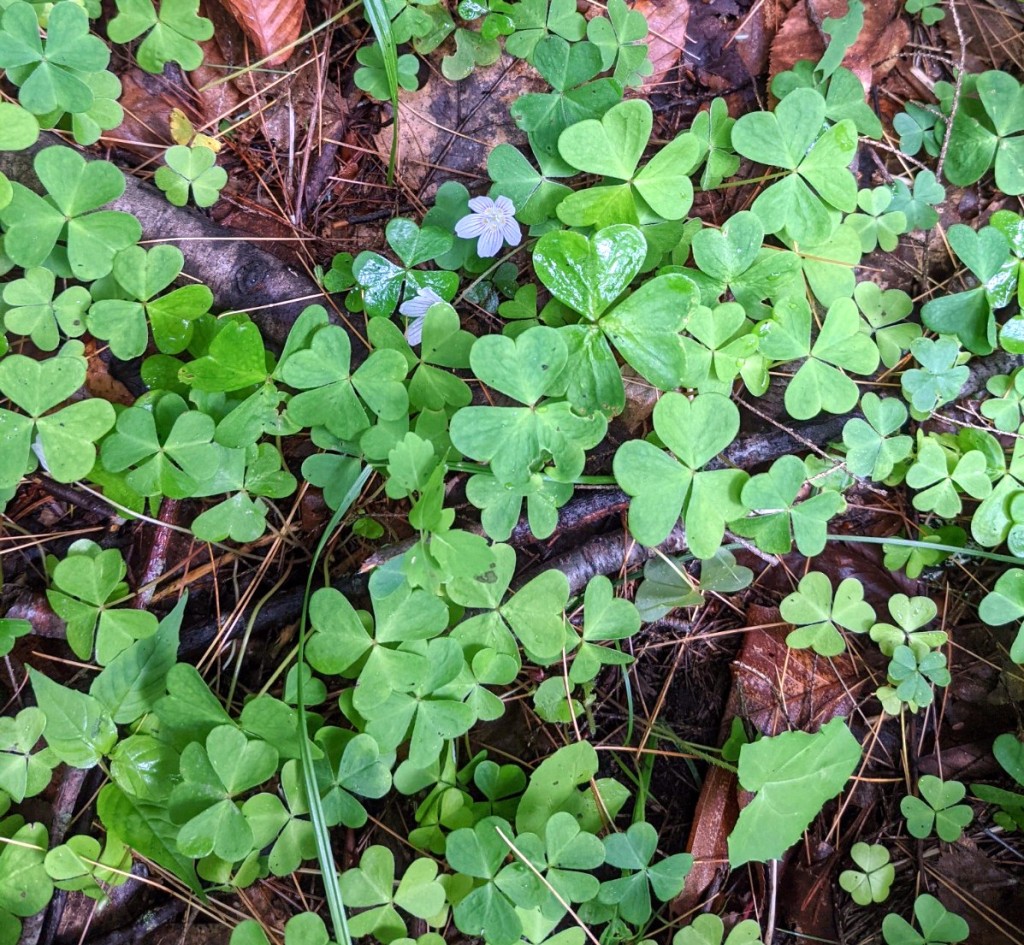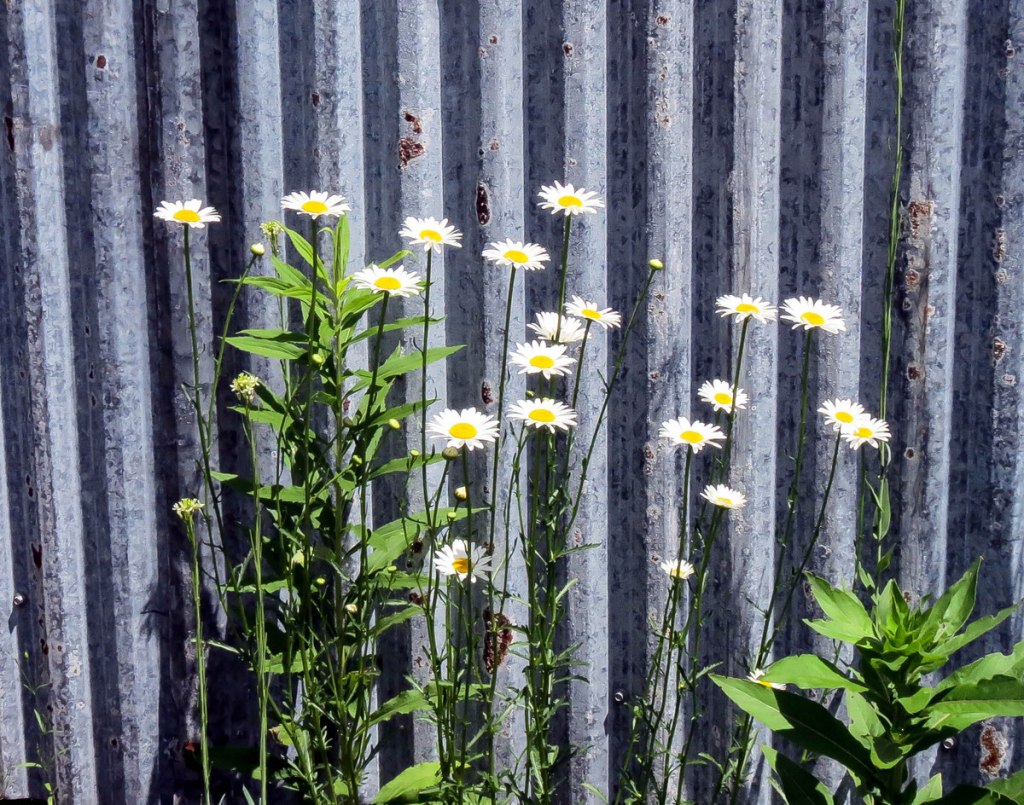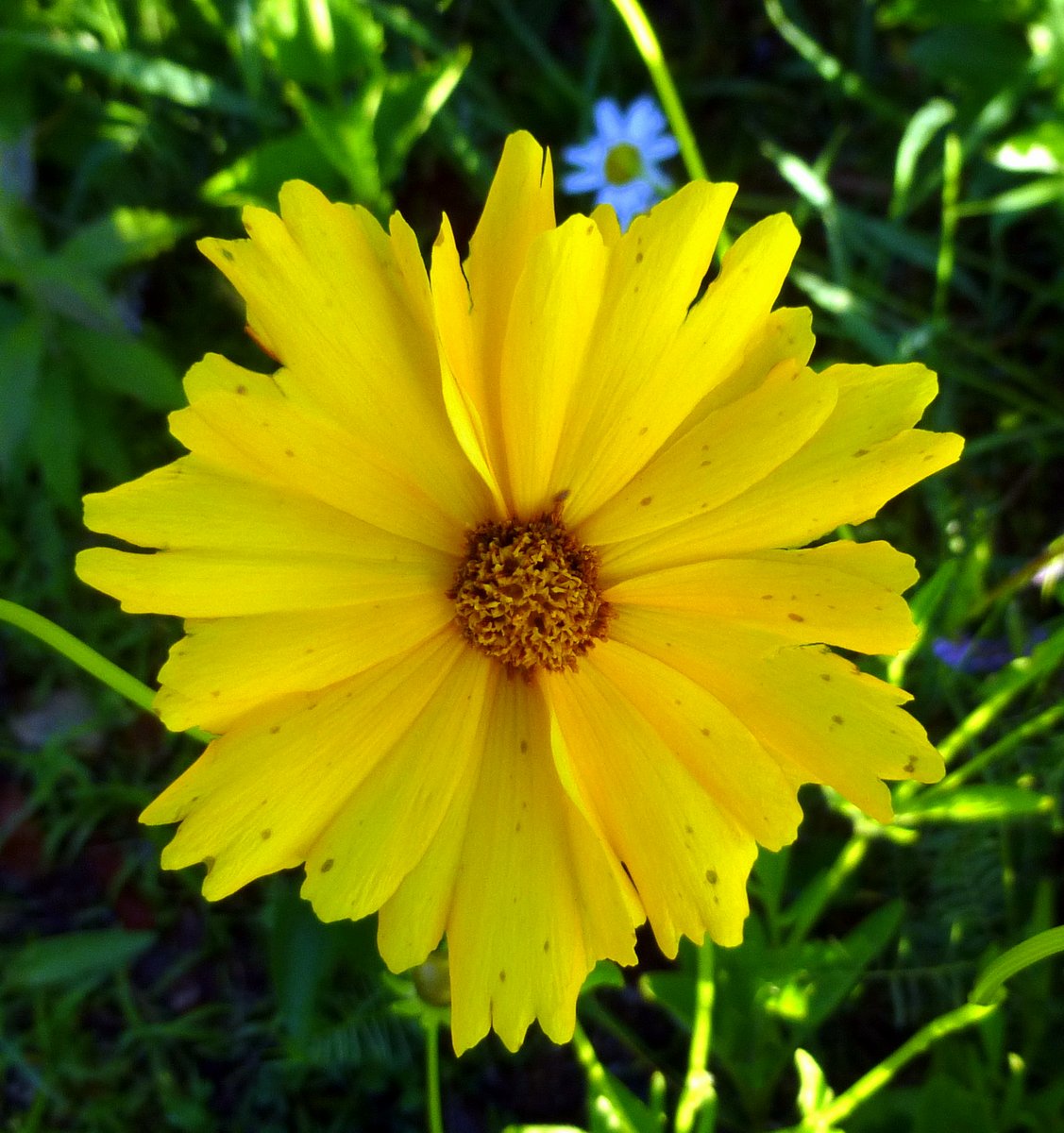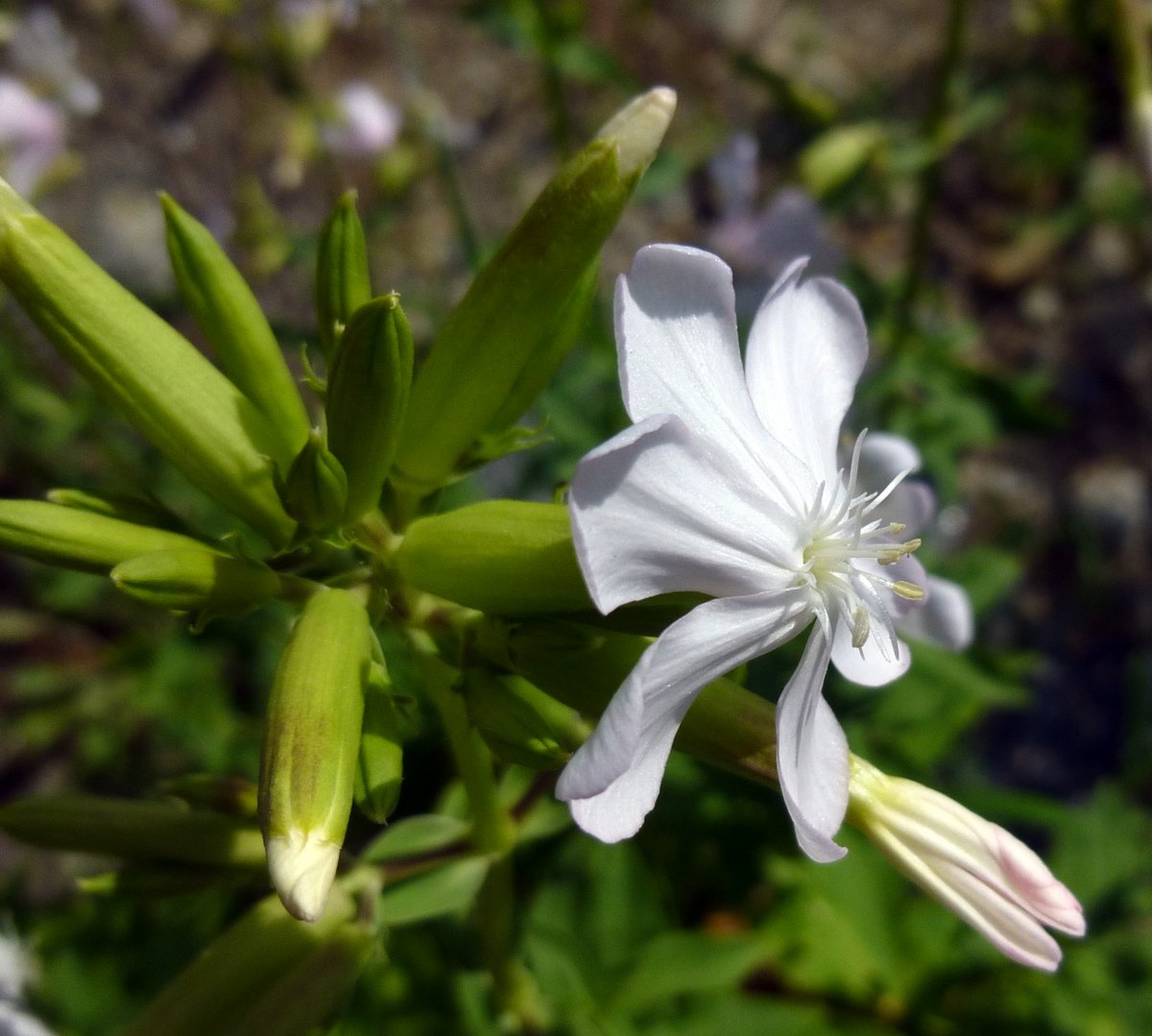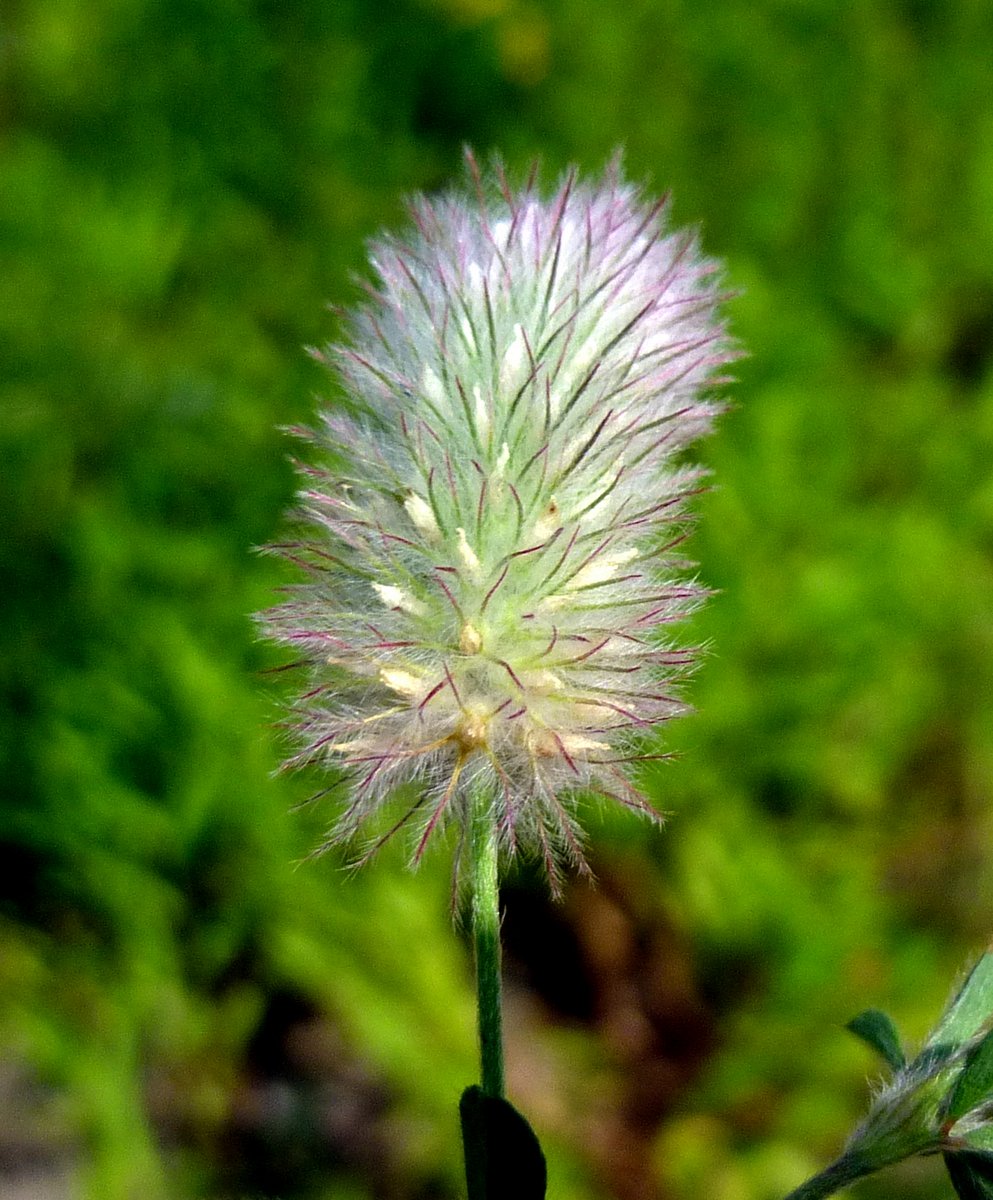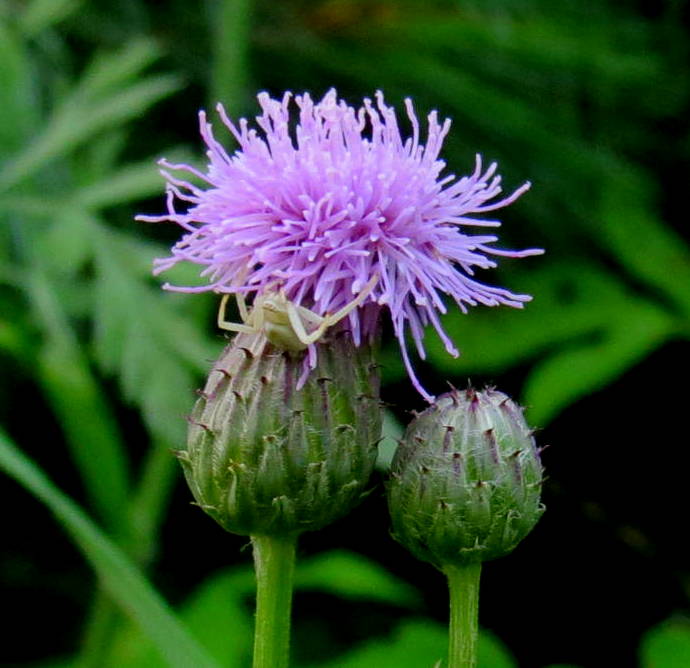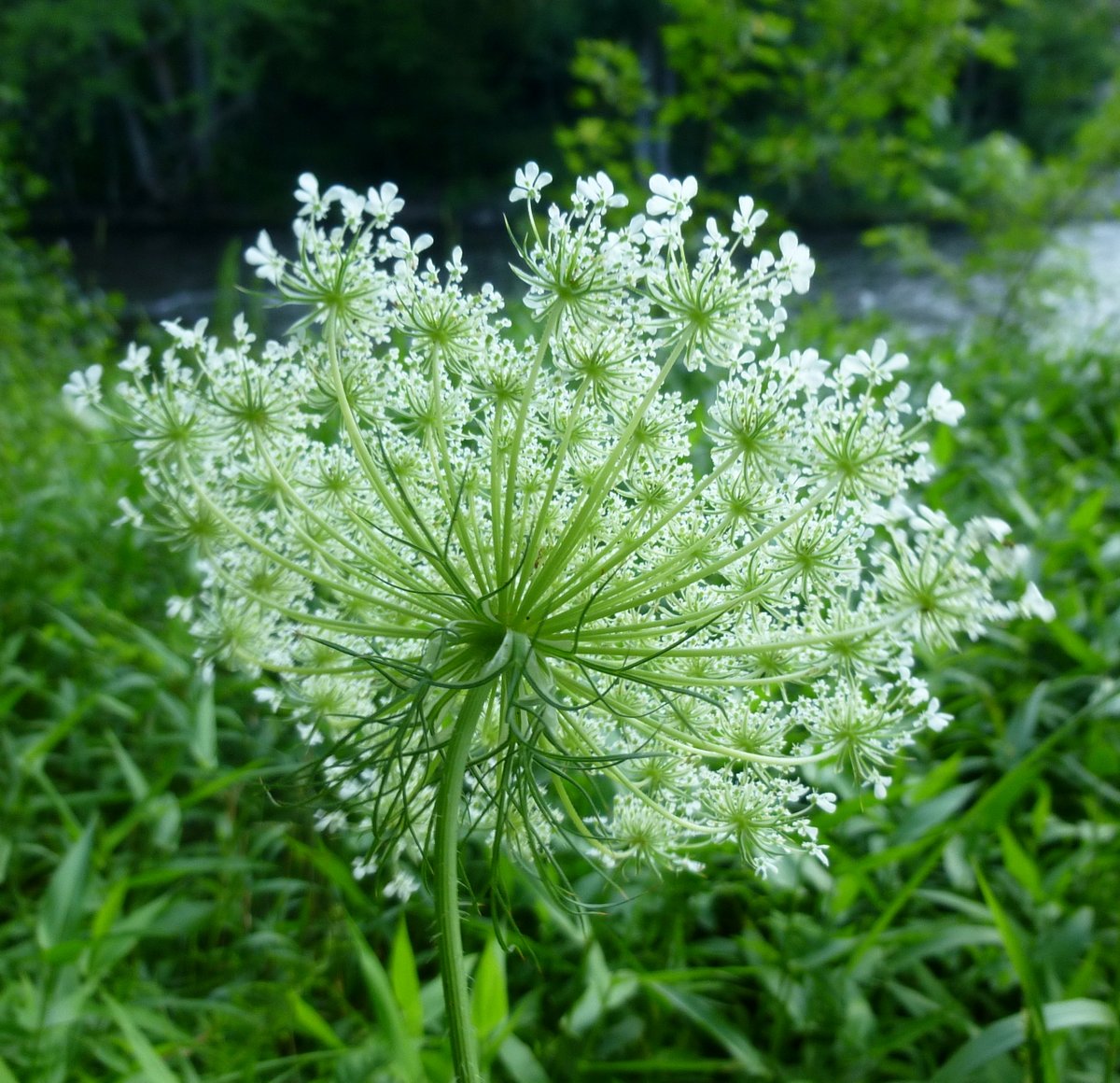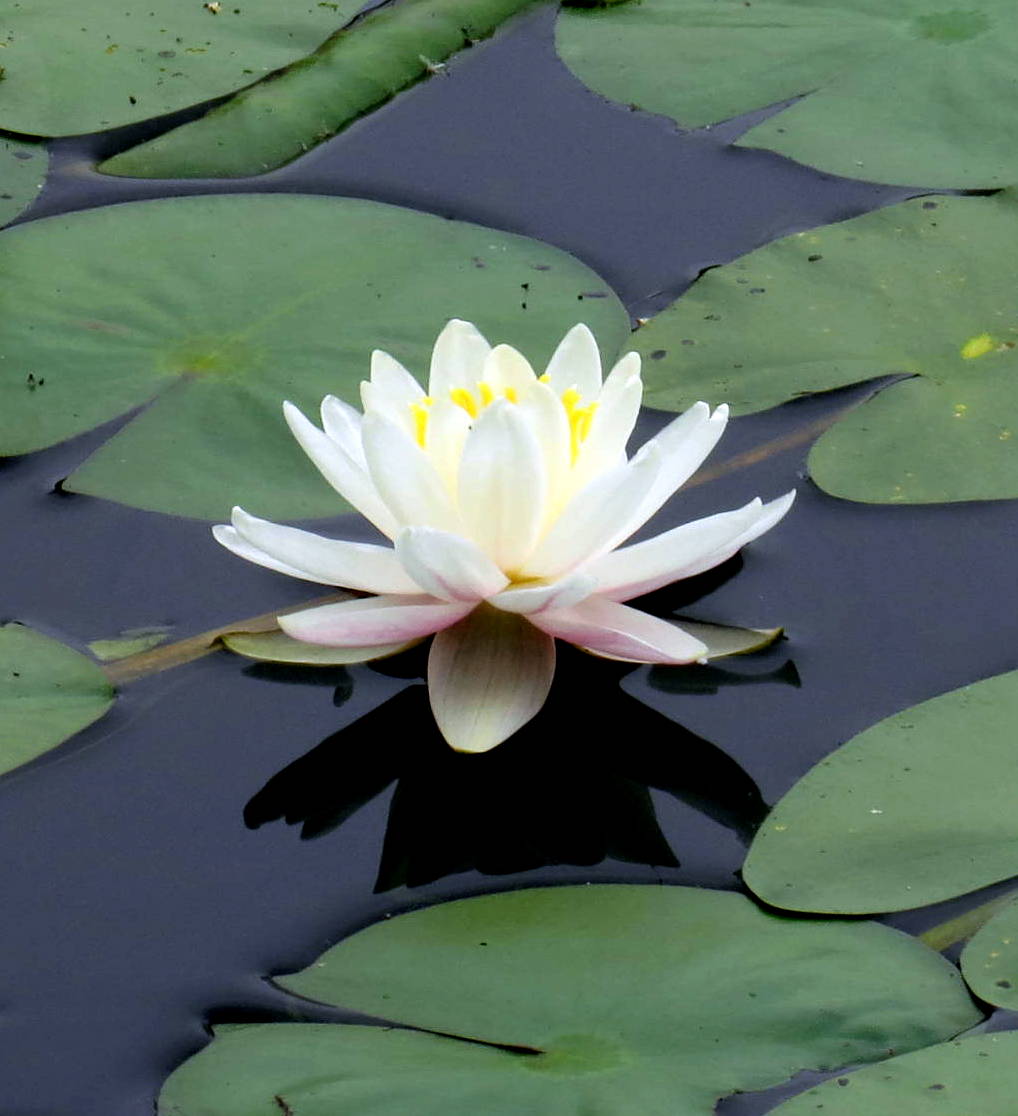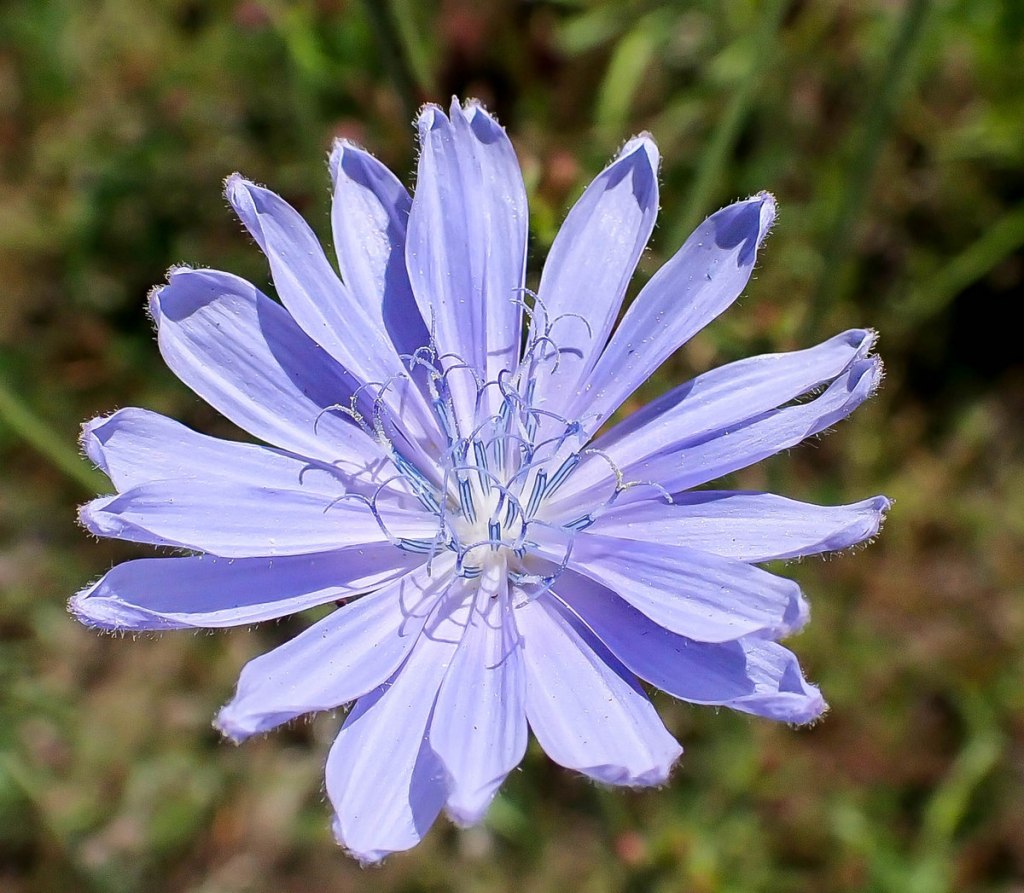
In July all the big flowered sun lovers like chicory (Cichorium intybus) start coming along. The plants, originally from Europe, are considered roadside weeds by many but chicory is one of my favorite summer flowers because of its beautiful color. They seem to be having a good year this year and are flowering well. I found this one right on the side of a very busy road and every time a car went by it would blow back and forth, so this shot was a challenge. Each flower is about as big as a half dollar, or about 3/4 of an inch. They will close up and look like a shriveled bud in the early afternoon and then open again the next morning. Chicory plants like full sun all day long, so you’ll only find them growing where they get it.
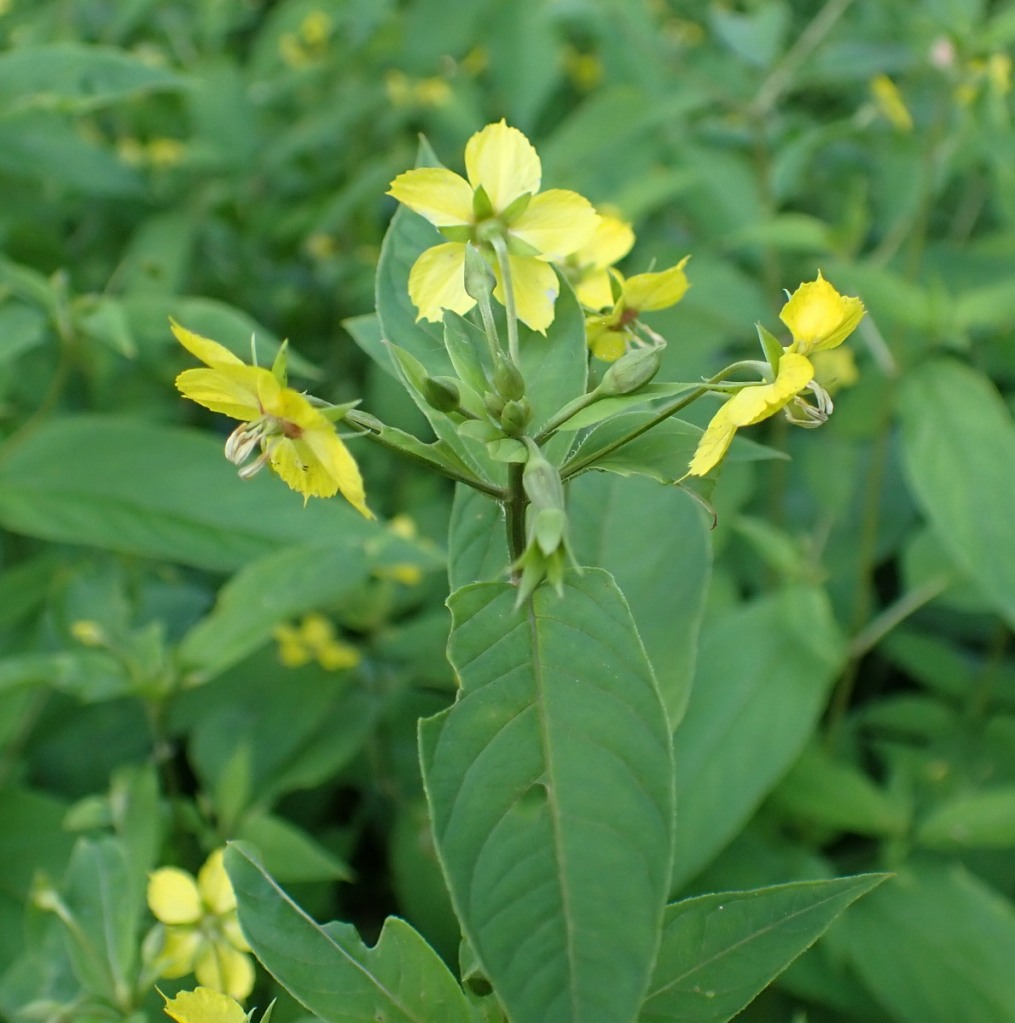
This plant prefers shade. Fringed loosestrife (Lysimachia ciliate) is the largest and latest blooming of our native yellow loosestrifes. It can grow in large colonies of knee-high plants, and can be found along roadsides and wood edges, and along waterways. The flowers are about the size of a quarter and nod to face the ground.

Luckily the plant’s stem is flexible and can be gently bent back so you can get a good look at the pretty flowers. The flowers are unusual because of the way they offer oils instead of nectar to insects. The oils are called elaiosomes and are fleshy structures that are attached to the seeds of many plant species. They are rich in lipids and proteins. Many plants have elaiosomes that attract ants, which take the seed to their nest and feed them to their larvae. Fringed loosestrife gets its common name from the fringe of hairs on its leafstalks, which can just barely be seen in this shot.
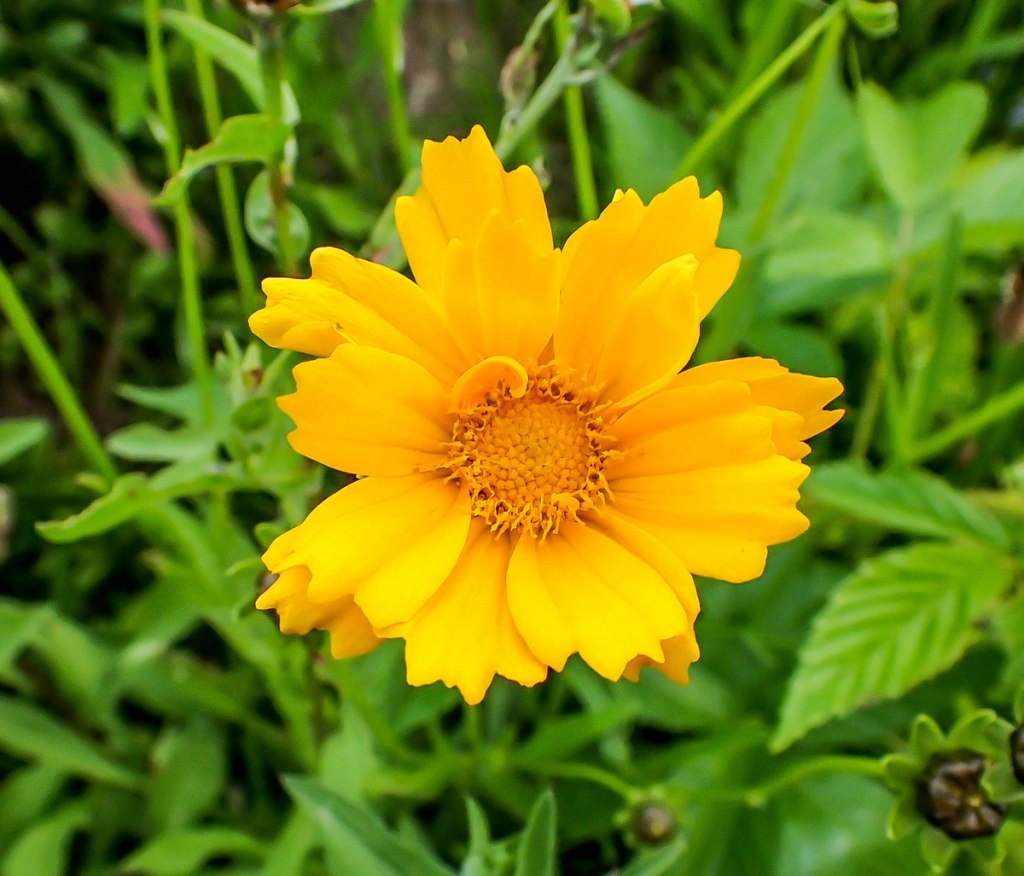
This tickseed coreopsis (Coreopsis lanceolata) was used to help keep a road embankment in place. It’s a native plant that gets its common name from the way its seeds cling to clothing like ticks. The plant is also called lance leaved coreopsis and that is where the lanceolata part of the scientific name comes from. Coreopsis is found in flower beds as well as in the wild and can form large colonies if left alone. You should take note of that fact before planting one in your garden. I’ve spent a lot of time pulling the seedlings in the past. The yellow flowers are about an inch across and stand at the top of thin, wiry stems. This plant has a cousin known as greater tickseed that grows in the south.

Showy tick trefoil (Desmodium canadense) is another plant with seeds that like to stick to clothing using little barbed hairs that cover the seed pods. Though its flowers weren’t fully open it’s still easy to tell that this is another plant in the pea family. There is no nectar to be had but bumblebees collect the pollen. The “showy” part of its common name comes from the way that so many of its small pink flowers bloom at once. As the plant sets seeds its erect stems bend lower to the ground so the barbed seed pods can catch in the fur of passing animals.

The big bull thistles (Cirsium vulgare) have come into bloom and are as full of thorns as ever. I remember at the end of the growing season one year I saw a single flower left on a plant but it was right in the middle of the plant, and I paid for that photo with a few drops of blood. These plants are originally from Europe and are considered invasive but since nobody really want to touch them, they have been fairly successful. Goldfinches will be along to eat the seeds later on.
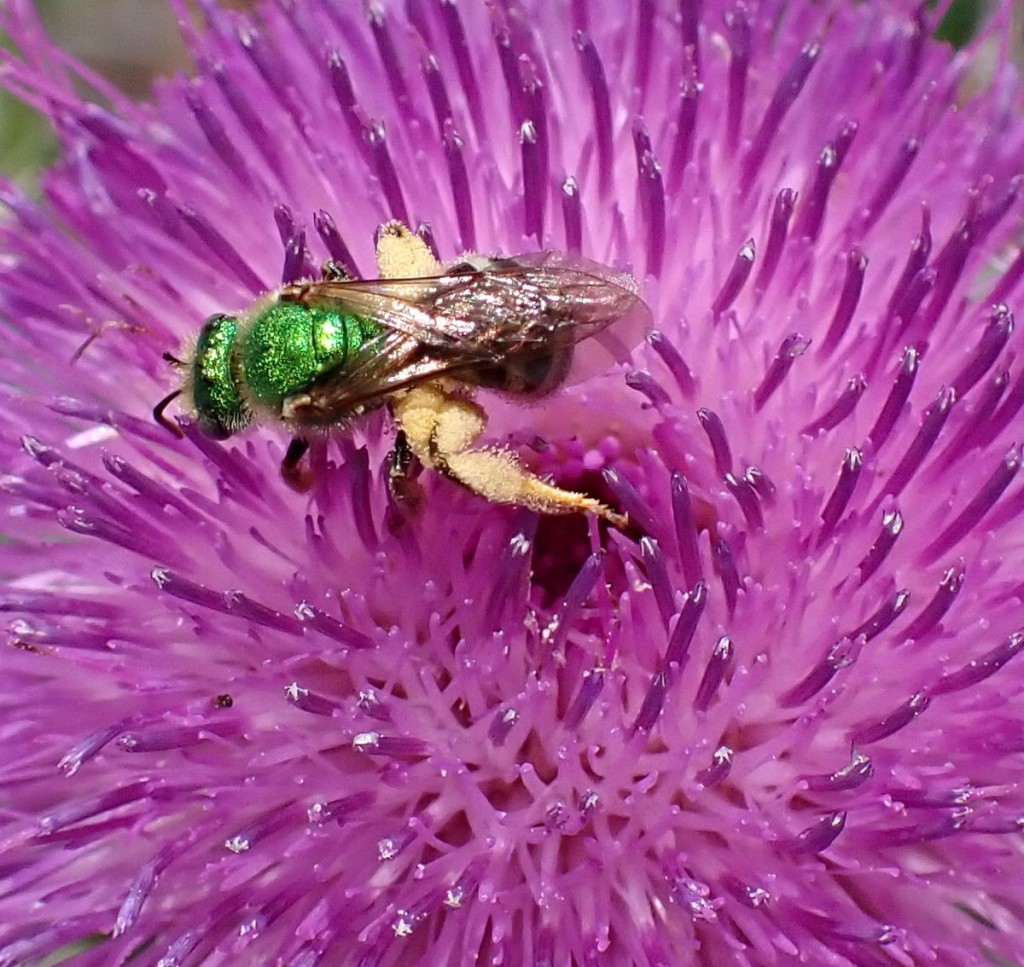
What I believe was a halictid bee was covered in thistle pollen. I loved its metallic sheen. These tiny bees are also called sweat bees, and when I did some reading about them, I was astounded to find how many of our fruits and vegetables they pollinate. It seems safe to say that if it wasn’t for them, we’d be eating a lot differently, and possibly a lot less.
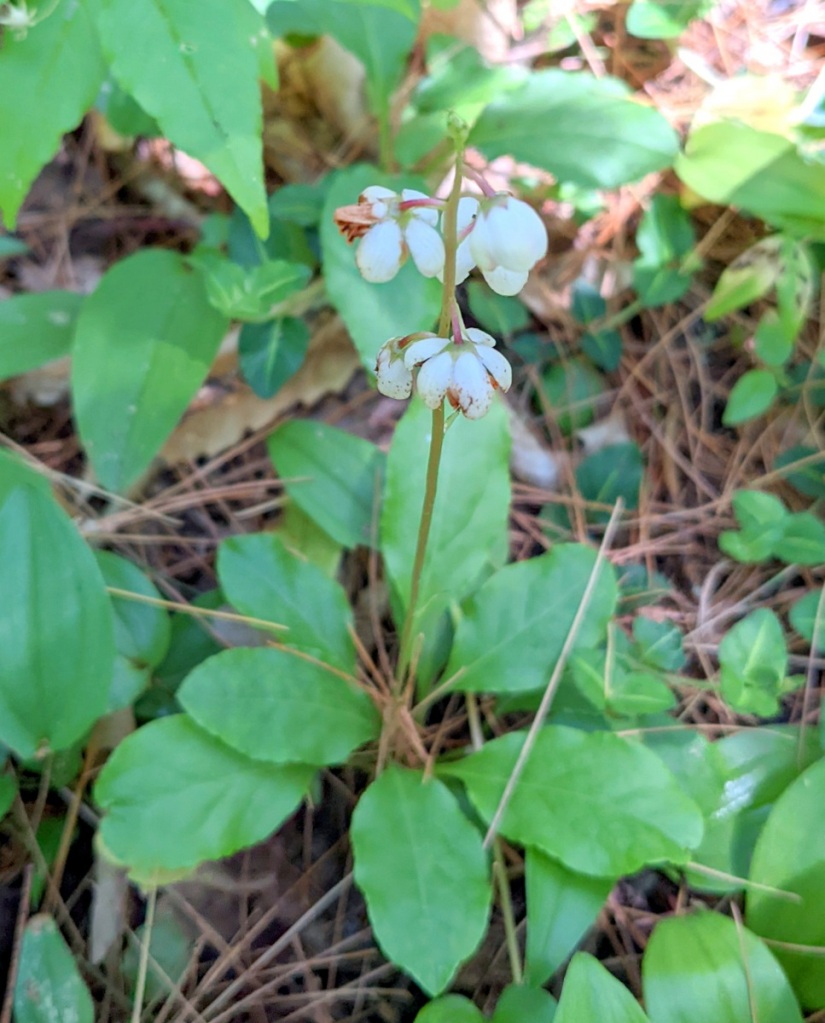
Our native wintergreens are blooming now and the first to bloom is usually shinleaf (Pyrola elliptica). I saw only a few blooming though; this seems to be a bad year for the wintergreens. Where I usually see hundreds of blossoms, this year I’m lucky to see a dozen. Shinleaf’s common name comes from the way Native Americans used it as a poultice to heal wounds. Like several other native wintergreens it contains compounds similar to those in aspirin and a tea made from it was used to soothe many ailments.

The big J shaped flower styles of shinleaf make it easy to identify. Since it persists through winter it is even a help when the flowers aren’t blooming.
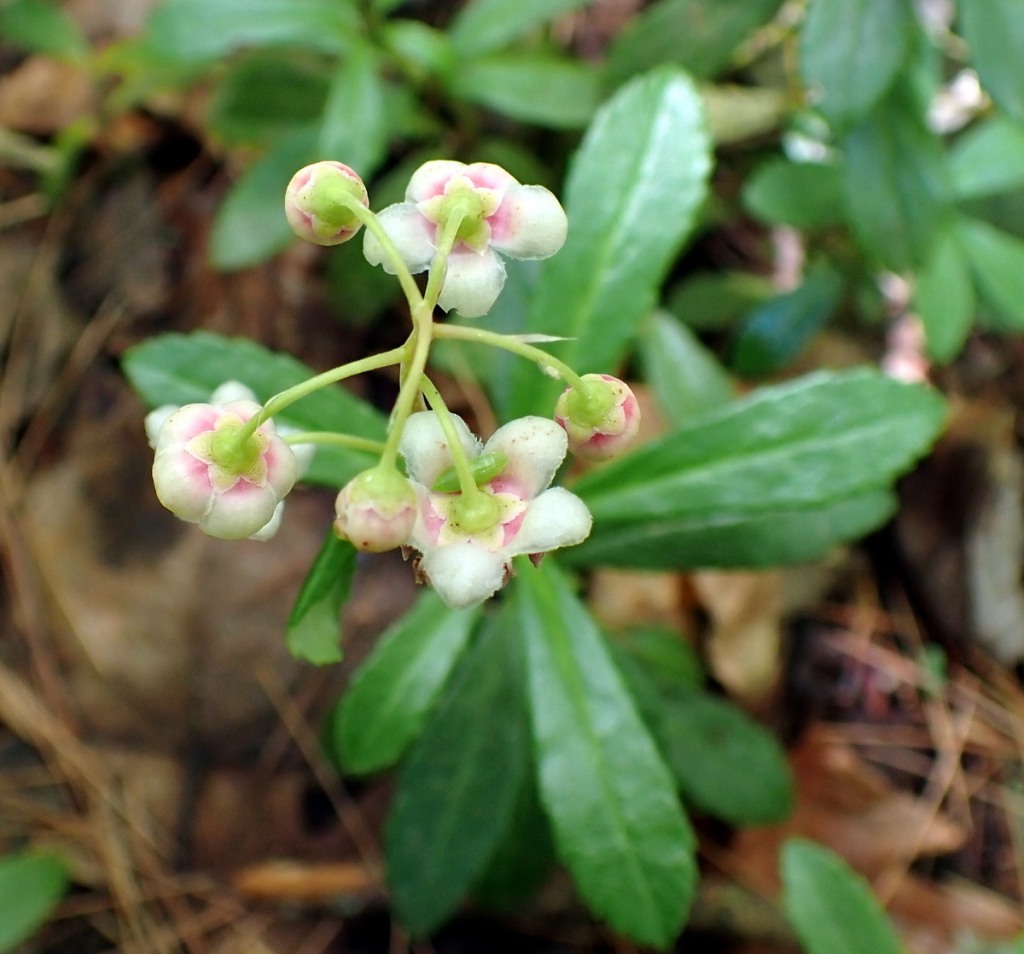
Pipsissewa (Chimaphilla corymbosa or Pyrola umbellata) is also having a bad bloom year. It is related to the shinleaf and striped wintergreen that also appear in this post and like them it likes things on the dry side. I find it in sandy soil that gets dappled sunlight. It is a low growing native evergreen that can be easily missed when there are only one or two plants, but pipsissewa usually forms quite large colonies and that makes them easier to find. The leaves are also very shiny, which also helps. The white or pink flowers are almost always found nodding downwards, as this photo shows.
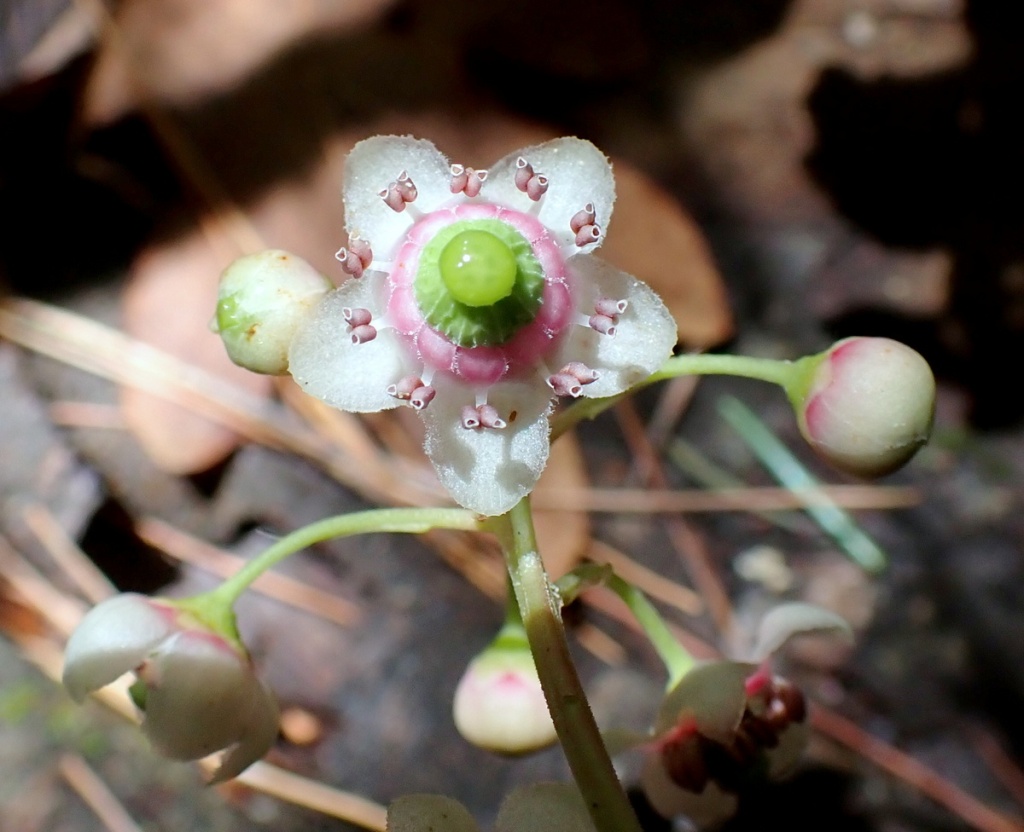
If you very gently push the stem back with a finger you can get a look at the dime size, pretty flowers. They often show a blush of pink, as this one did. Five petals and ten chubby anthers surrounding a plump center pistil make it prettier than most of the wintergreens, in my opinion. This plant, like many of the wintergreens, is a partial myco-heterotroph, meaning it gets part of its nutrition from the fungi that live in the surrounding soil. Odd that a plant would be parasitic on fungi, but there you have it.

In the summer striped wintergreen (Chimaphila maculata) is almost invisible, and even though I knew right where to look for it I had to walk back and forth several times to find it. It is a plant that is quite rare here; I know of only two or three small colonies. It likes to grow in soil that has been undisturbed for decades and that helps account for its rarity. Like other wintergreens It isn’t having a good year this year. There were maybe 8 plants here and this was the only one with flower buds, but its buds look as if they’re failing, so this plant probably won’t blossom.

Puffy, pretty little bird’s foot trefoil (Lotus corniculatus) has been blooming for a while now. This is another plant in that huge pea (legume) family of plants. It was imported from Europe for use as a forage plant, but it has escaped cultivation and is now found just about everywhere. Its common name came about because someone thought its seedpods looked like a bird’s foot.

I mentioned a few posts ago that, as far as I knew plant breeders hadn’t been able to come up with a truly black flower, but nature has. I’ve looked at the flowers of black swallow wort (Cynanchum louiseae ) in all kinds of light and they always look black, not purple to me. This is a very invasive plant; a vine that likes to grow in the center of shrubs and will twine around the shrub’s branches, climbing up to the top where it can get more sun. The plant is in the milkweed family and like other milkweeds its flowers become small green pods that will eventually turn brown and split open to release their seeds to the wind. It also has a sharp, hard to describe odor that is noticed when any part of it is bruised. It originally came from Europe sometime around 1900 as a garden specimen and of course has escaped. In places it has covered entire hillsides with its wiry, tangled stems and is called the dog strangler vine.

Narrow leaf cow wheat is blooming right on schedule and forest floors are covered with it. A plant that can photosynthesize and create its own food but is still a parasite on surrounding plants is known as a hemiparasite, and that’s what cow wheat is, a cute little thief.
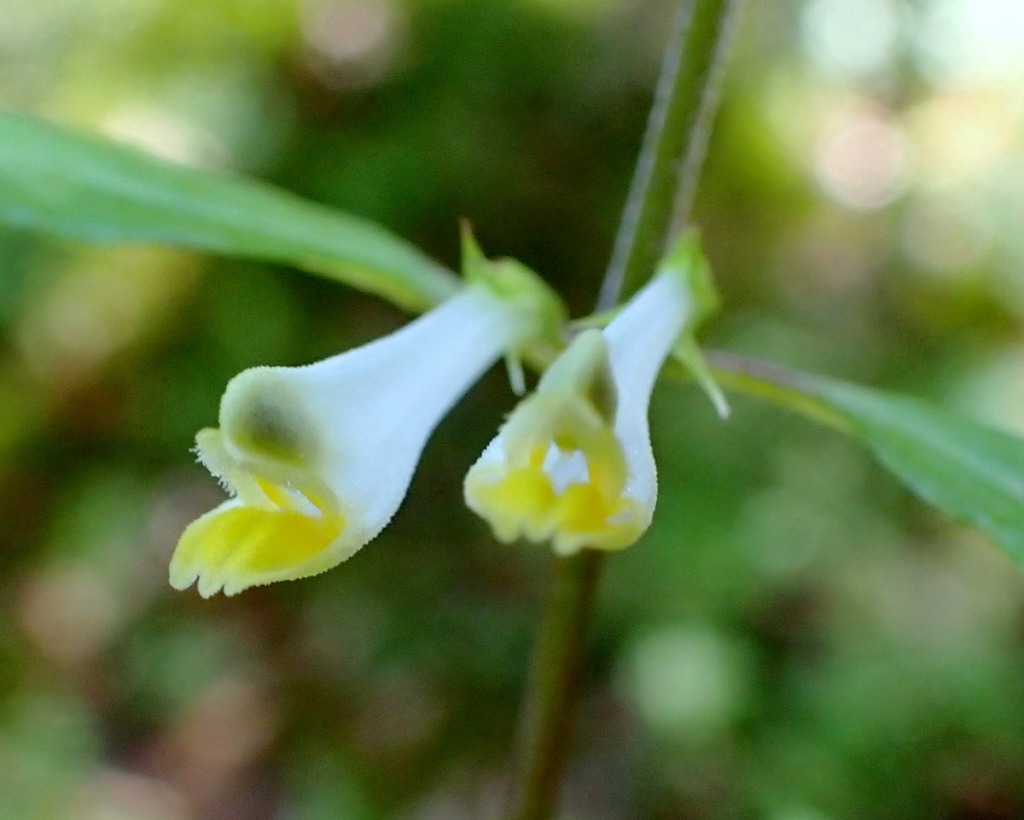
Cow wheat’s long white, tubular flowers tipped with yellow-green are very small, and usually form in pairs where the leaves meet the stem (axils). I mostly find this plant growing in old, undisturbed forests.
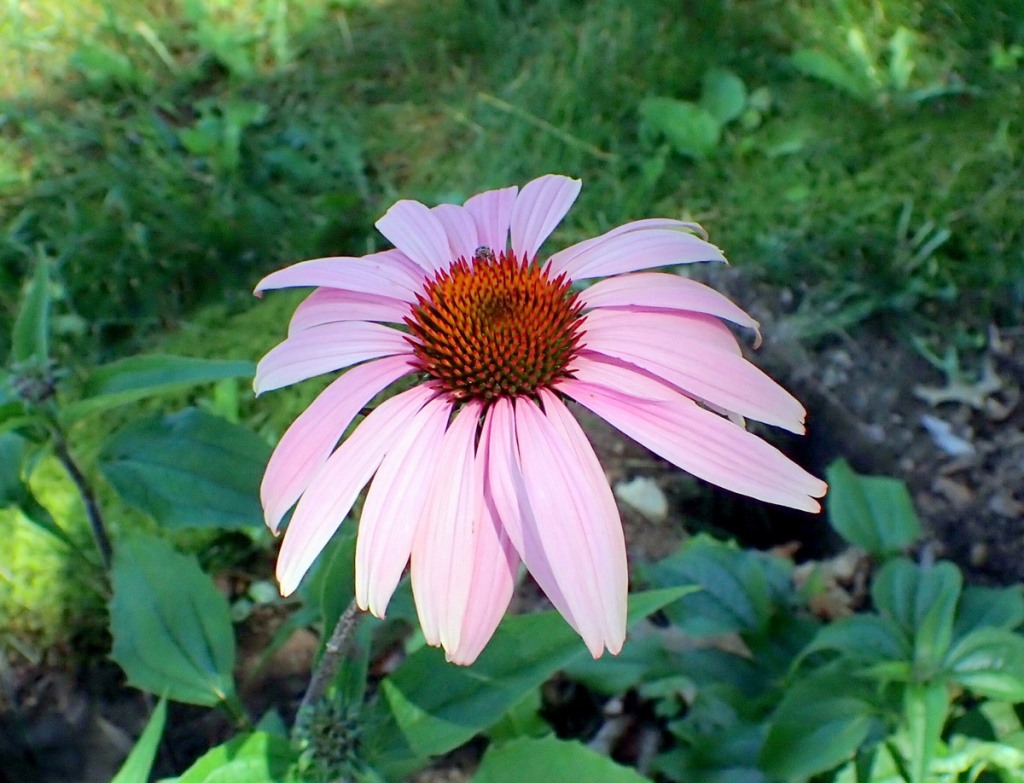
The coneflowers seem to be blooming early this year, but it’s probably just me. It’s another plant I think of as a fall flower, so seeing them in June is a bit of a jolt. I’m really not ready to think of fall just yet.

Hollyhocks are a great old fashioned garden flower that used to be used in the backs of perennial borders and the like, but I don’t see them used much anymore. It’s too bad because they have beautiful flowers.

This hollyhock had so much pollen it was falling off before the bees could get to it.
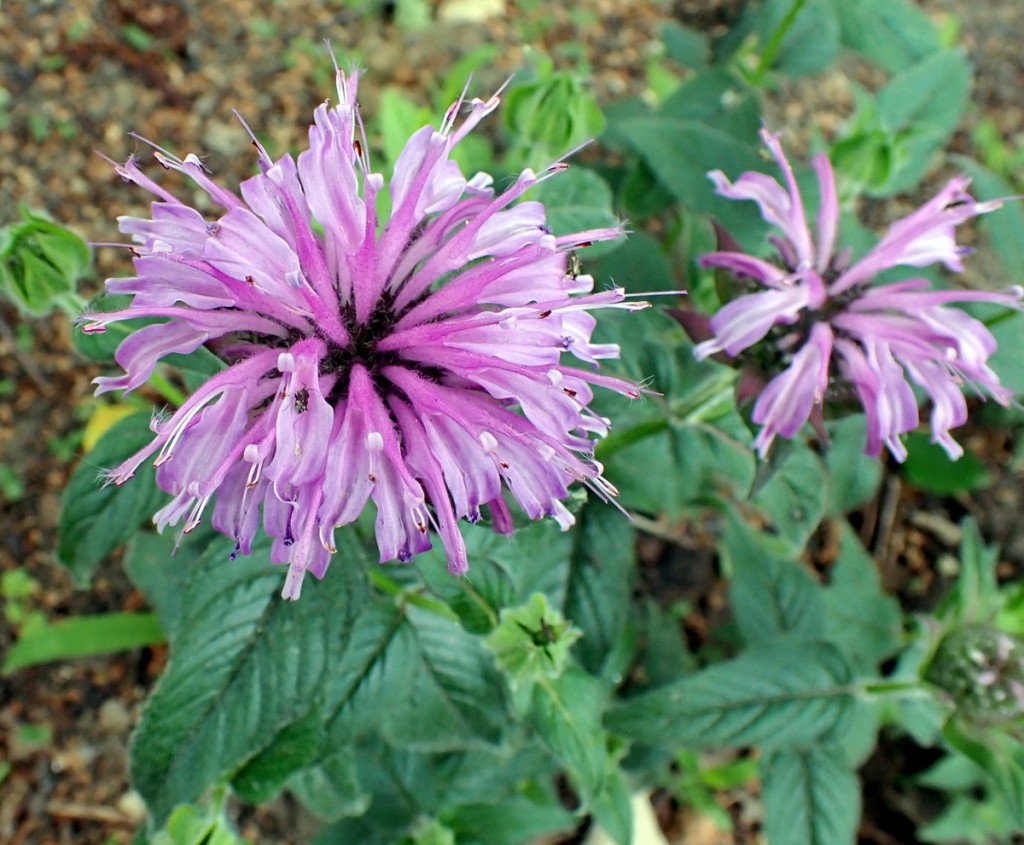
I found this purple bee balm in a local park but I’m of two minds about the flowers. They’re much fuller and robust than the native red bee balms but I think I still like the red flowers best.

Though I found a good size colony of it at the local college last year I’d still say that Asiatic dayflower (Commelina communis) is rare here. The single plant I knew before I found this colony had a single small flower. From the photos I had seen I always thought the flowers would be as big as a tradescantia blossom, but it was only half that size. It is an introduced plant from China and Japan but it could hardly be called invasive in this area because I just never see them. I love its colors.

I’m still waiting for our native Canada lilies to start blooming but that doesn’t mean I’m not seeing any lilies. This one was in a public garden and was very beautiful, I thought. I used to grow lots of lilies here but then the lily beetle came to town and that finished that.
None can have a healthy love for flowers unless he loves the wild ones. ~Forbes Watson
Thanks for coming by.
